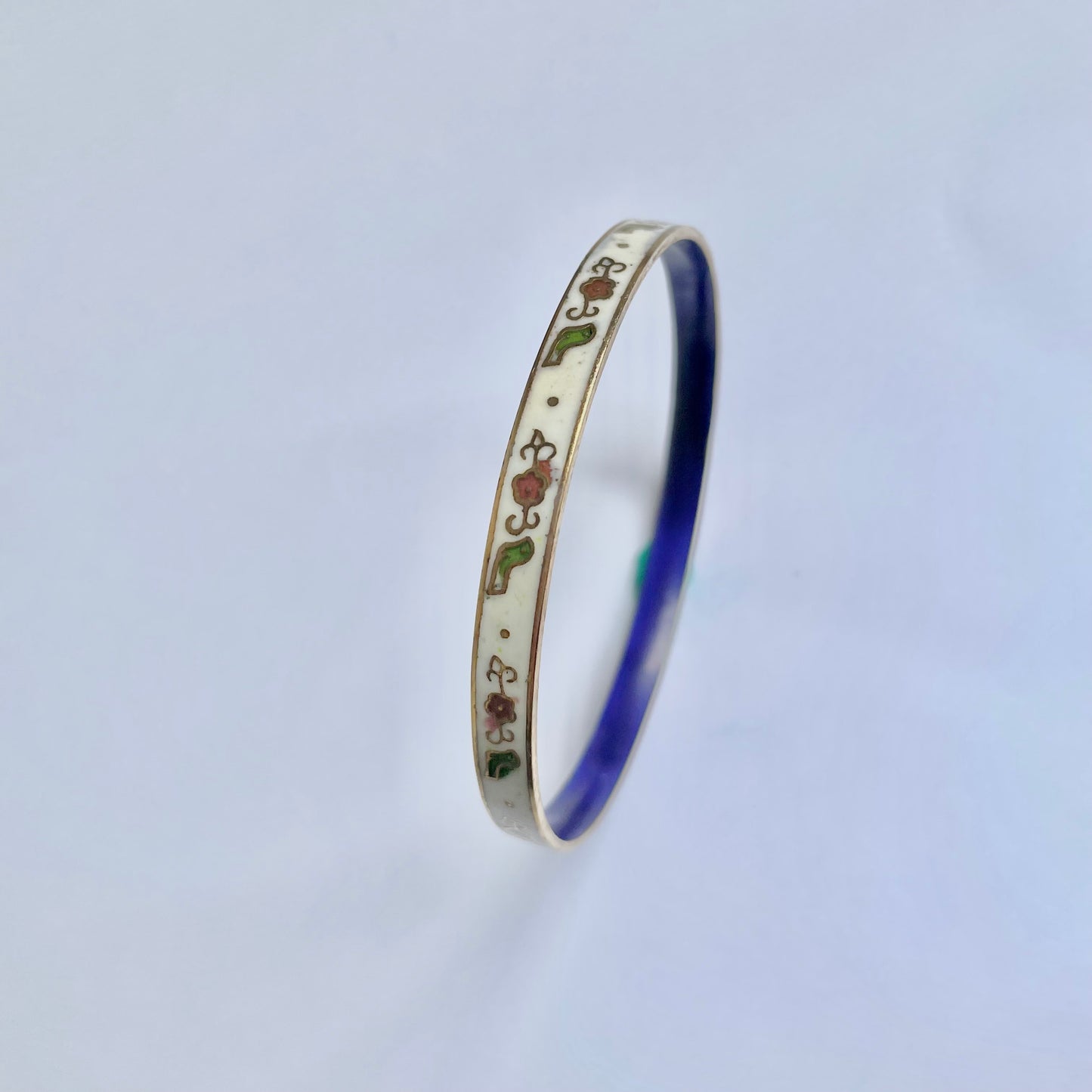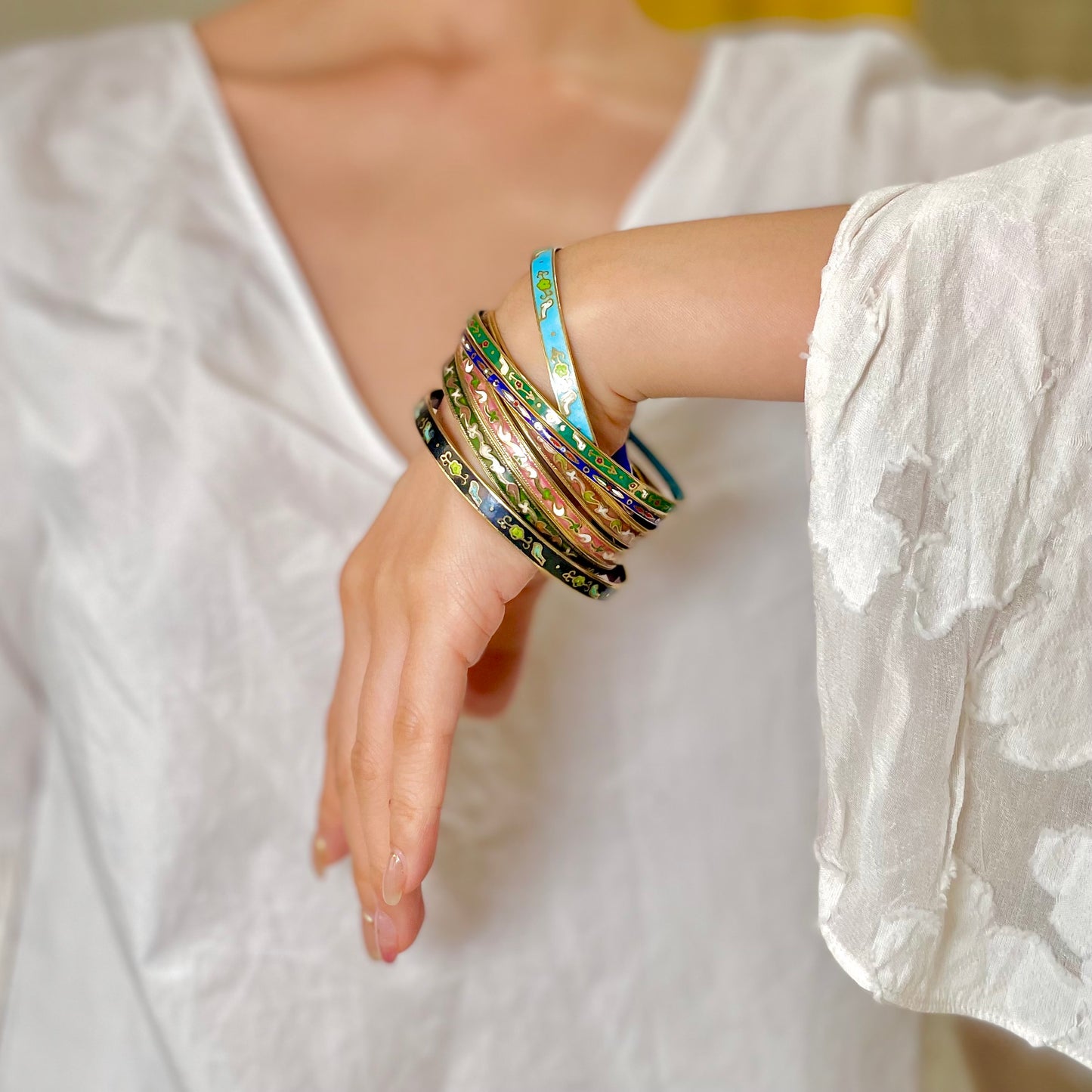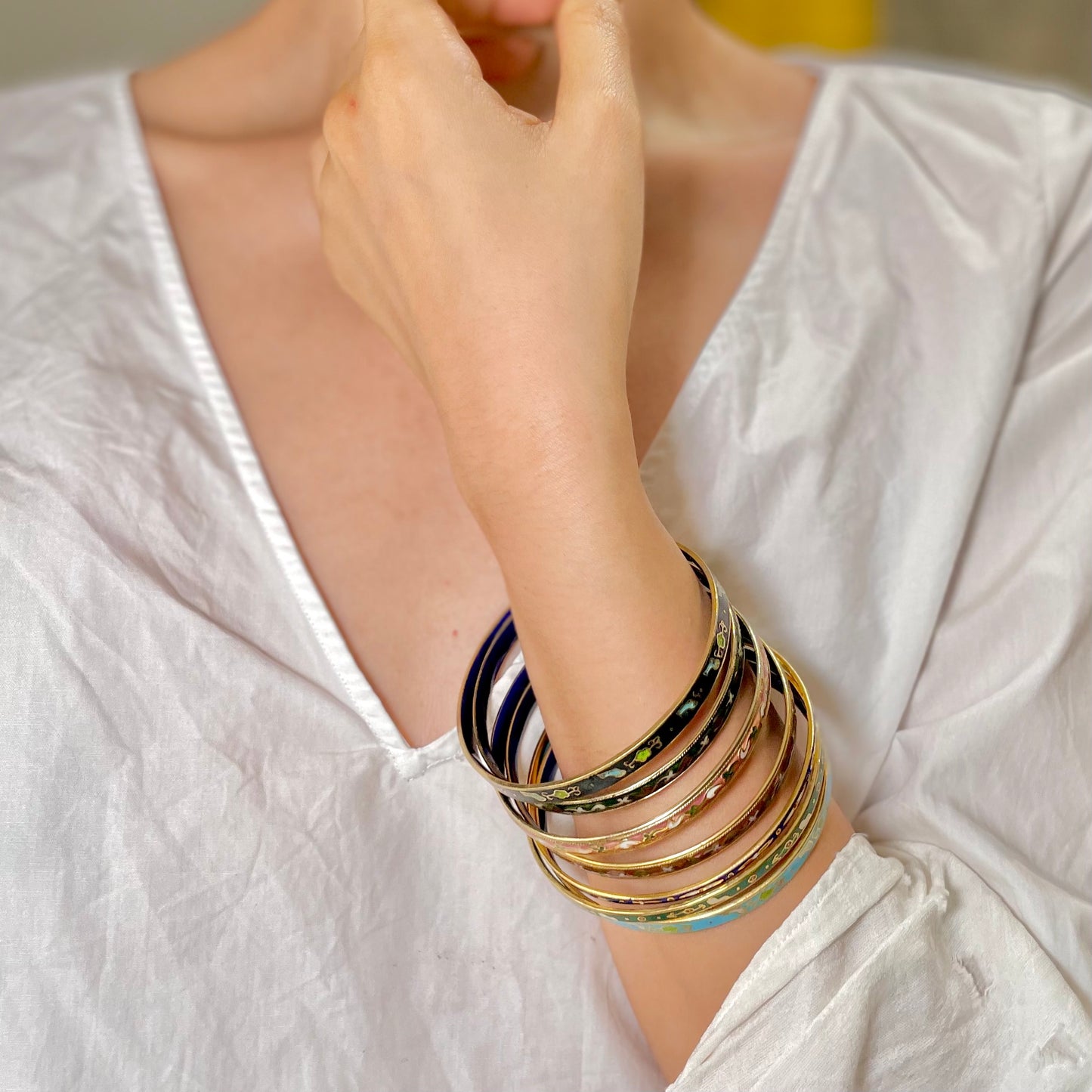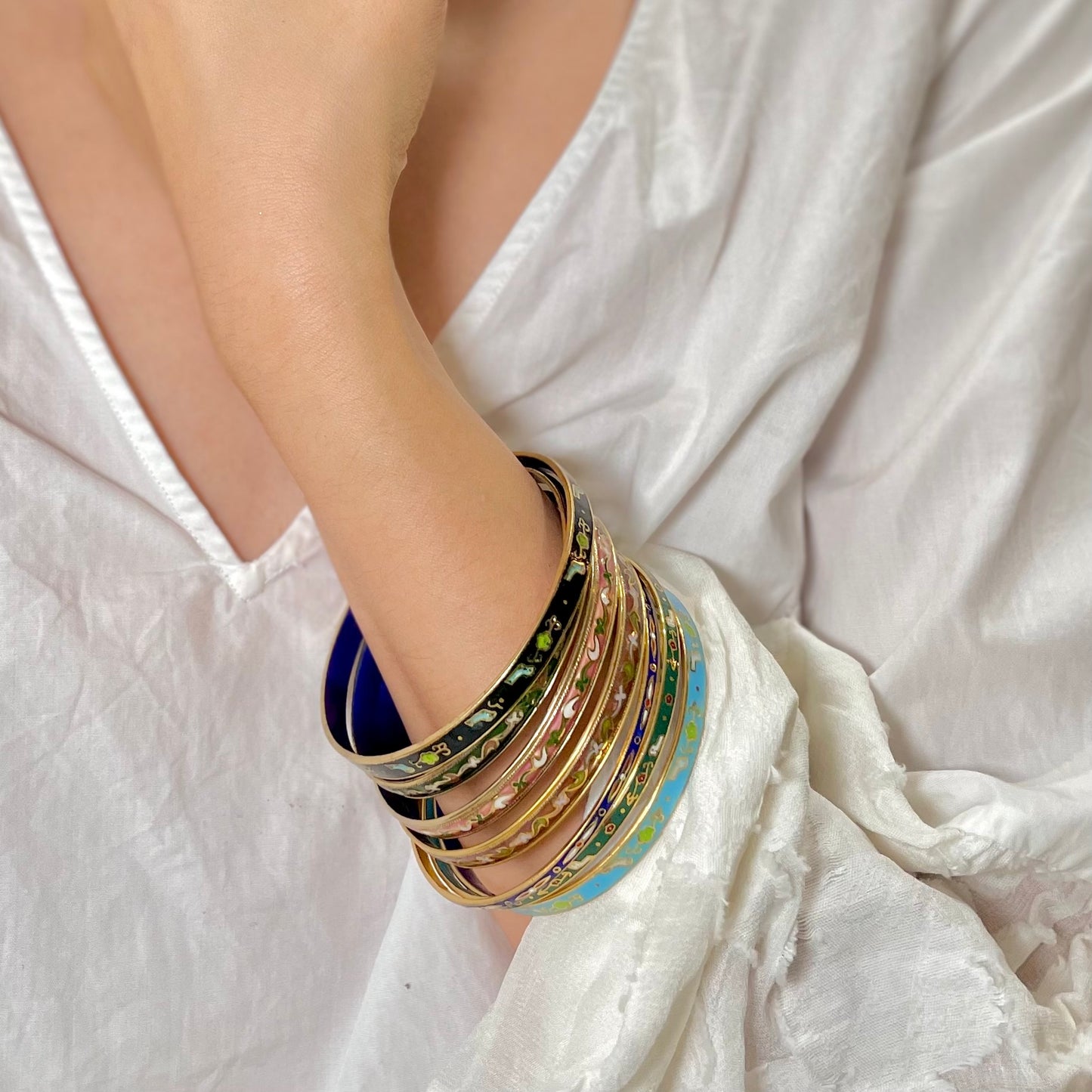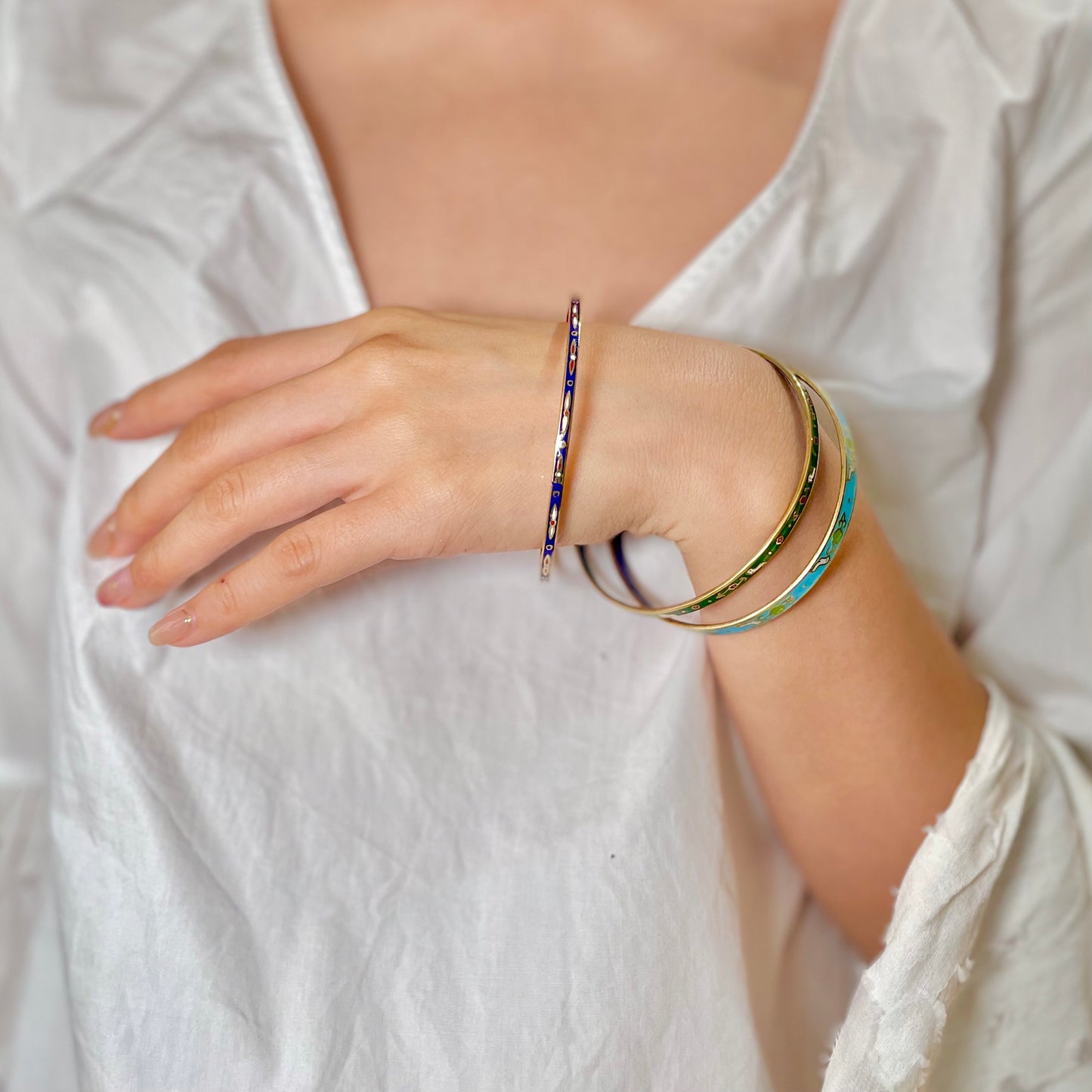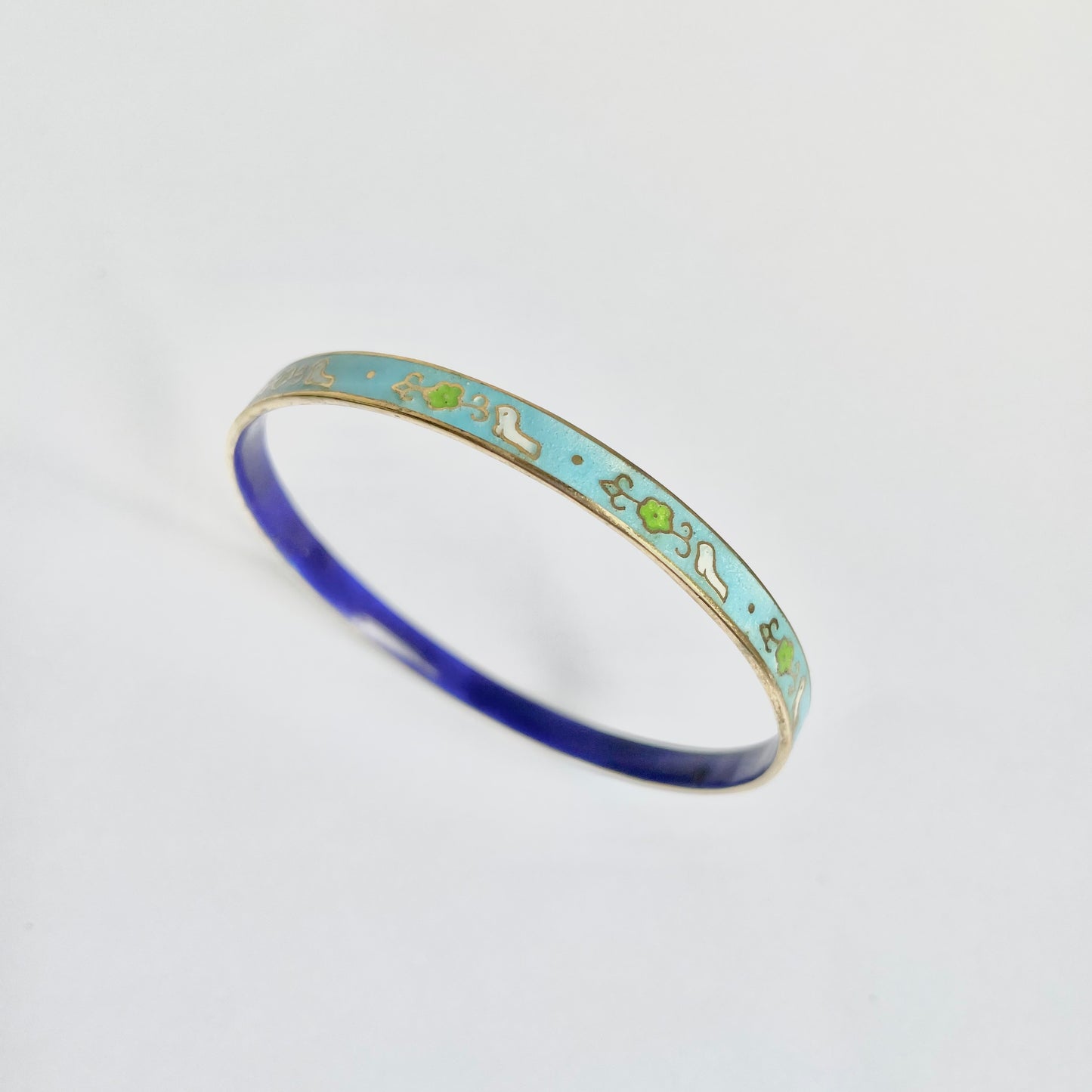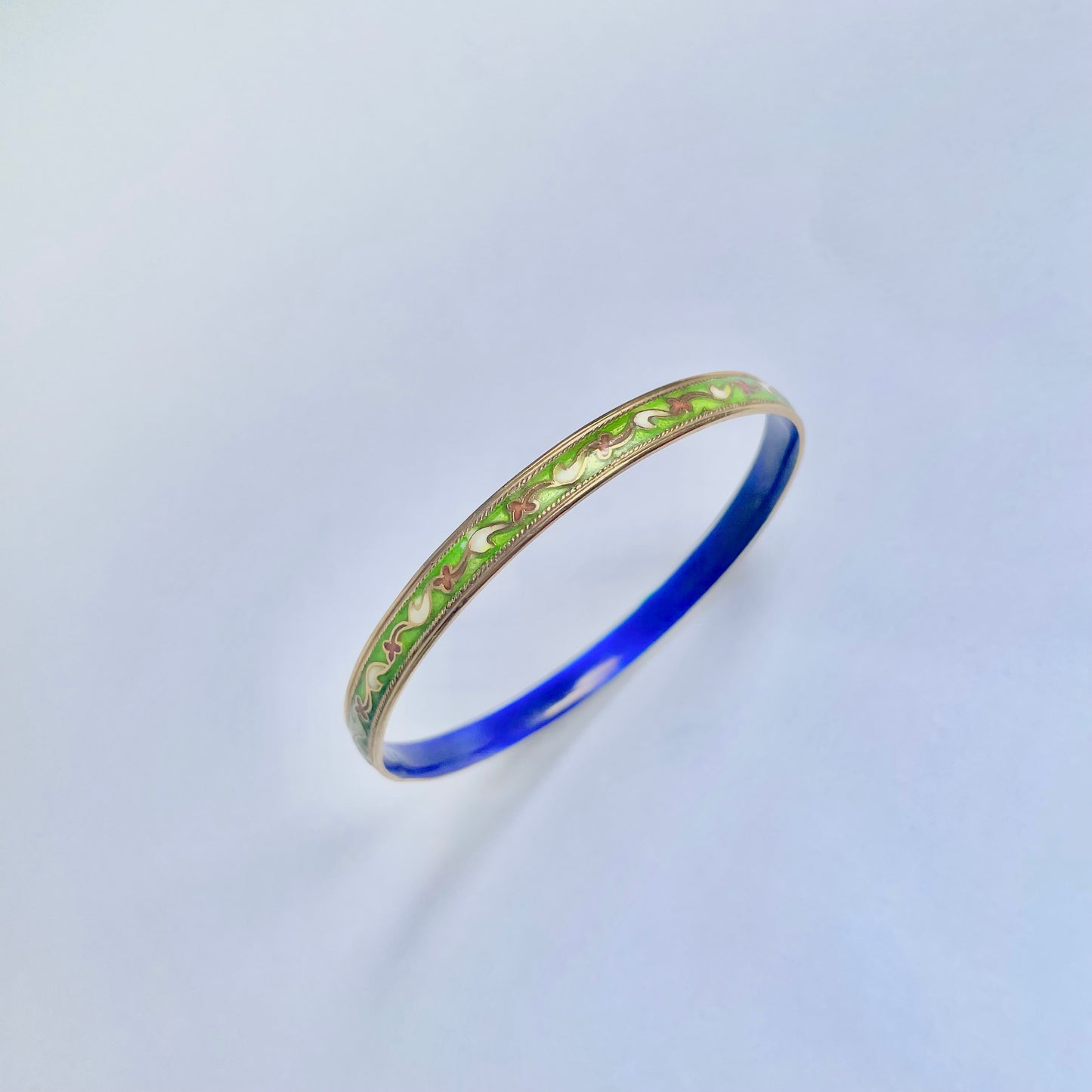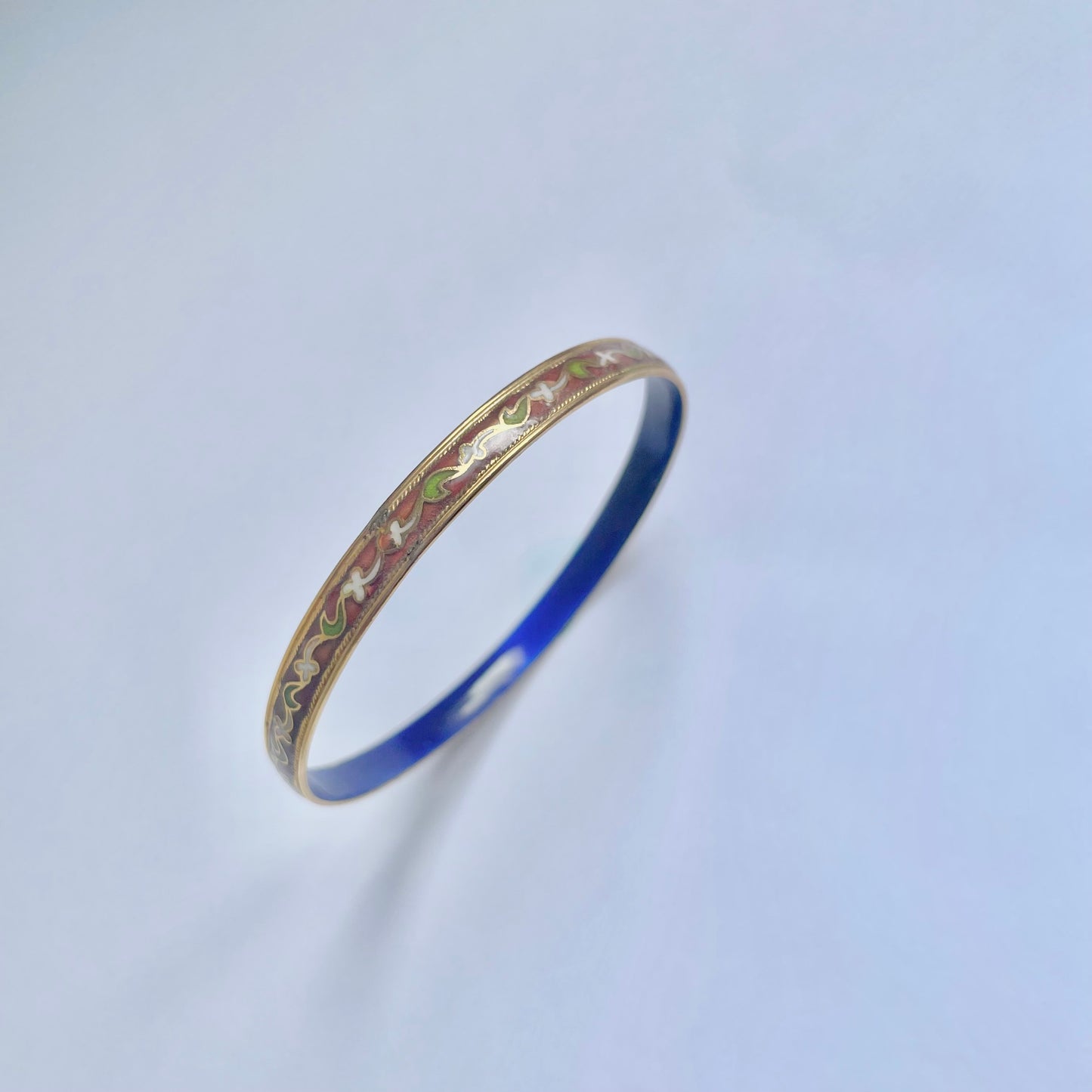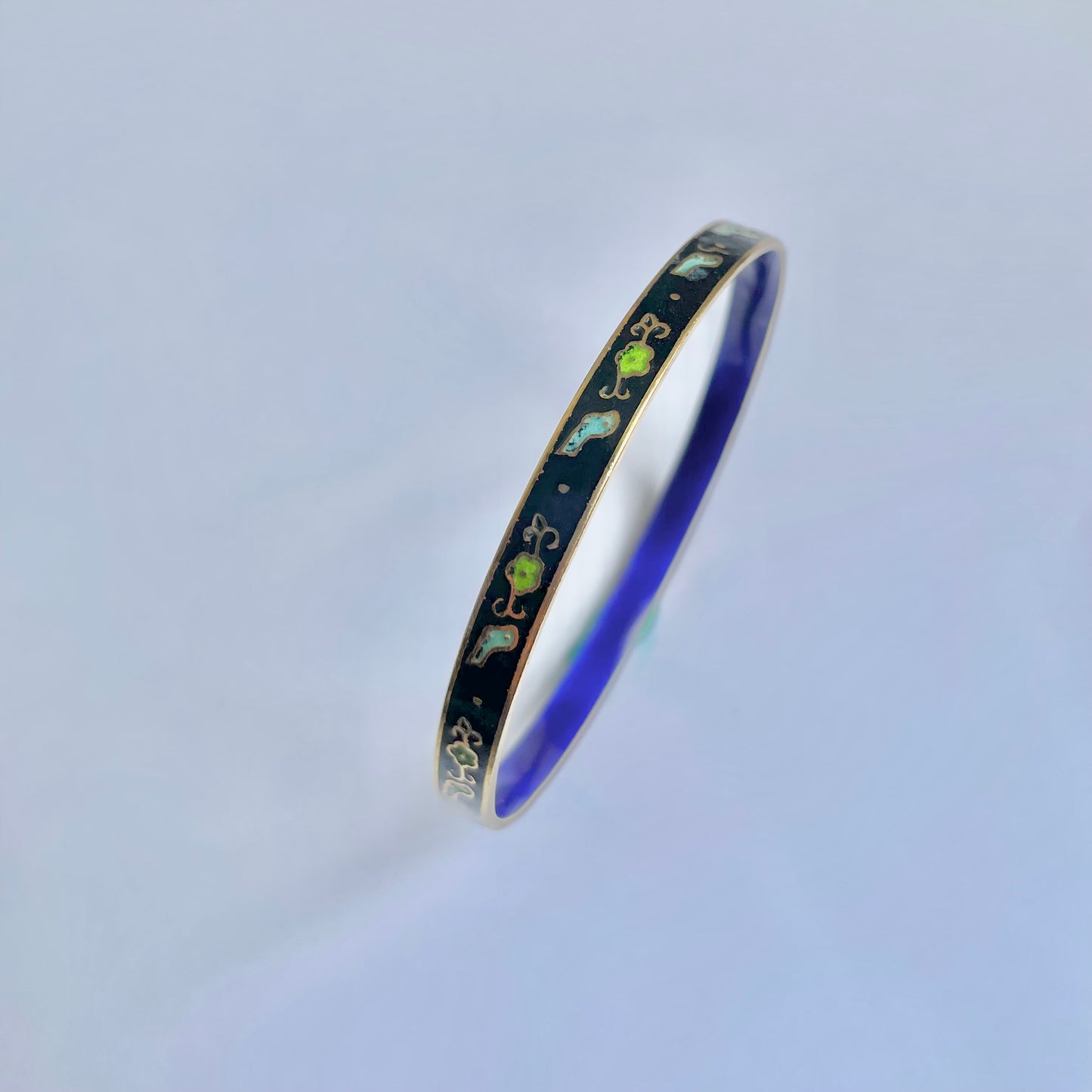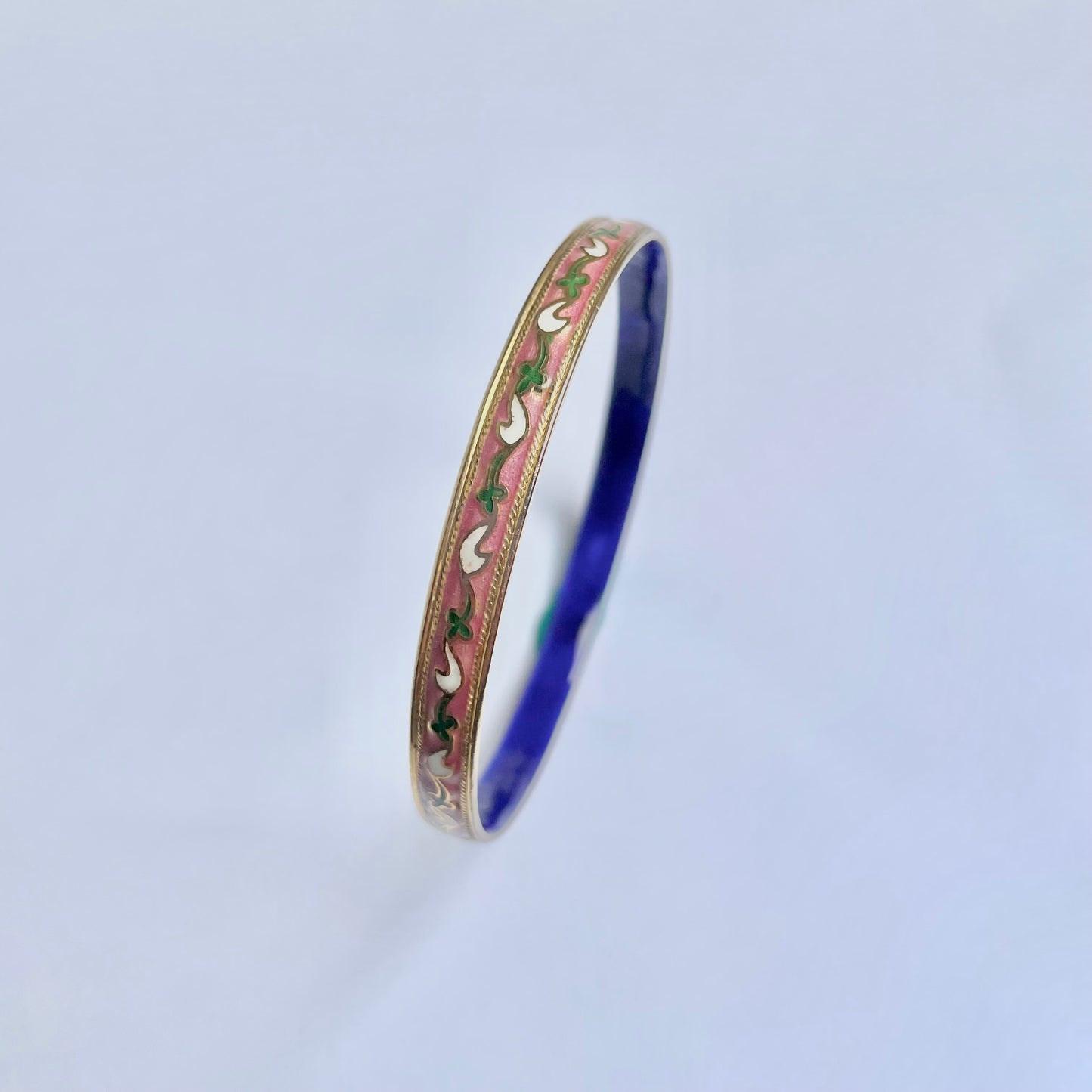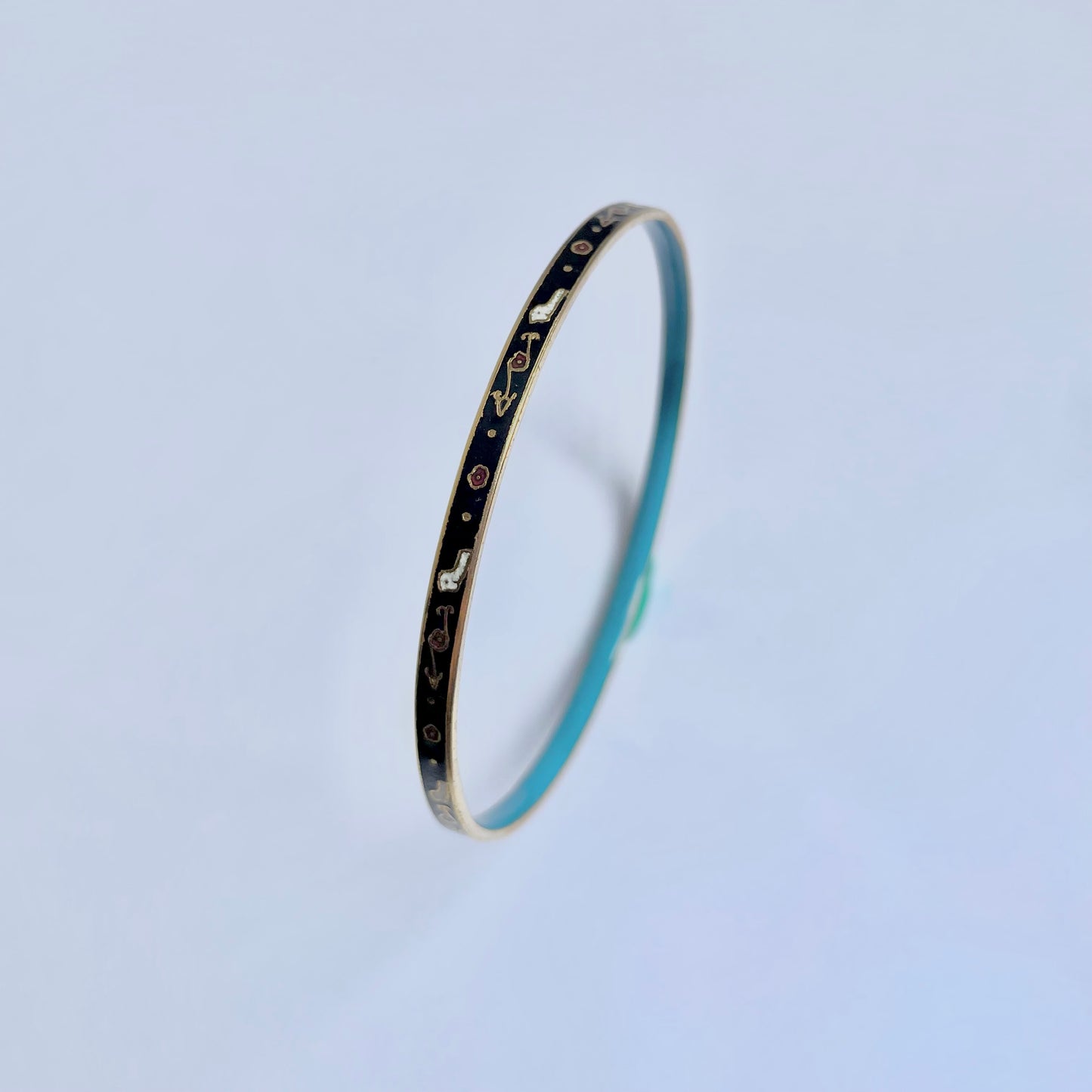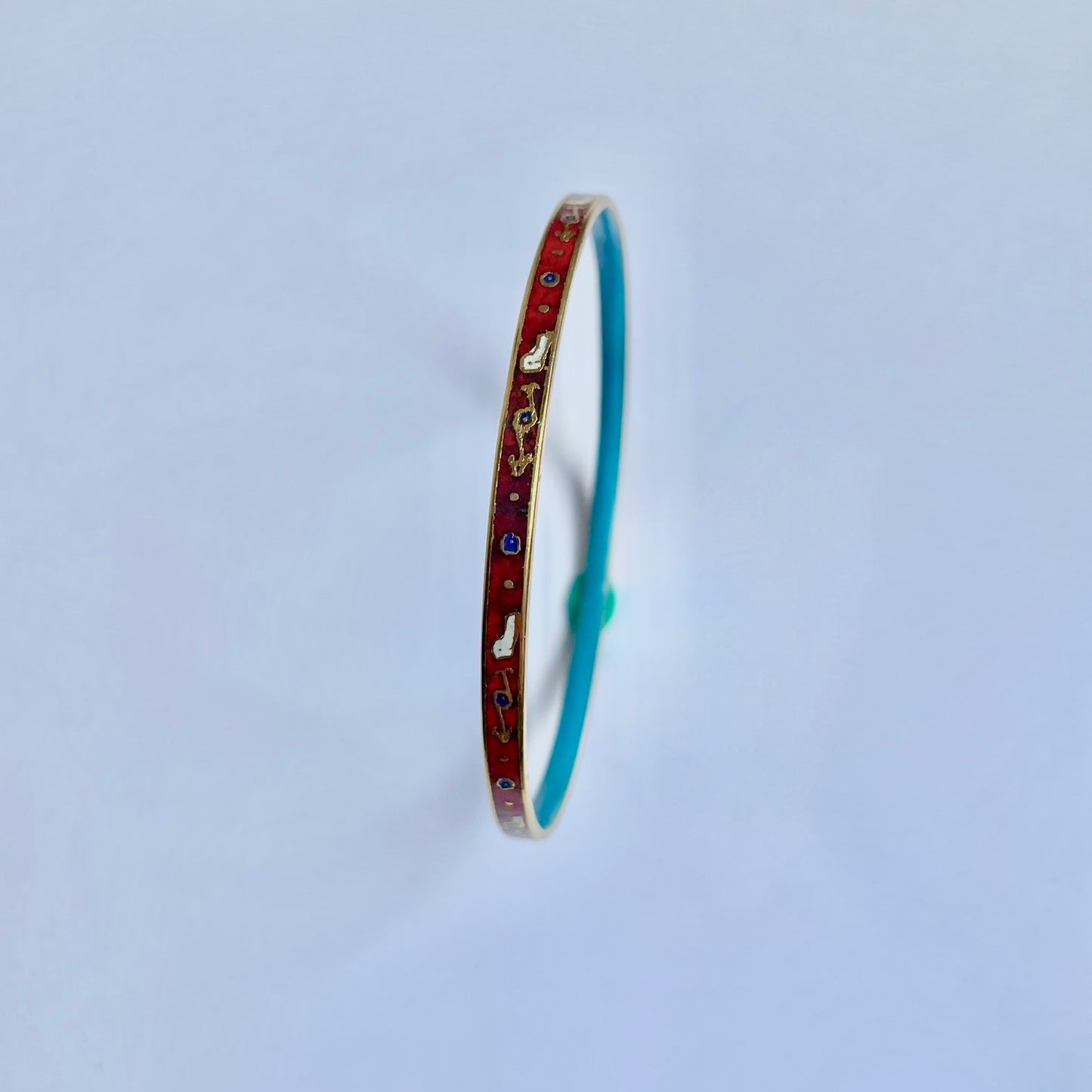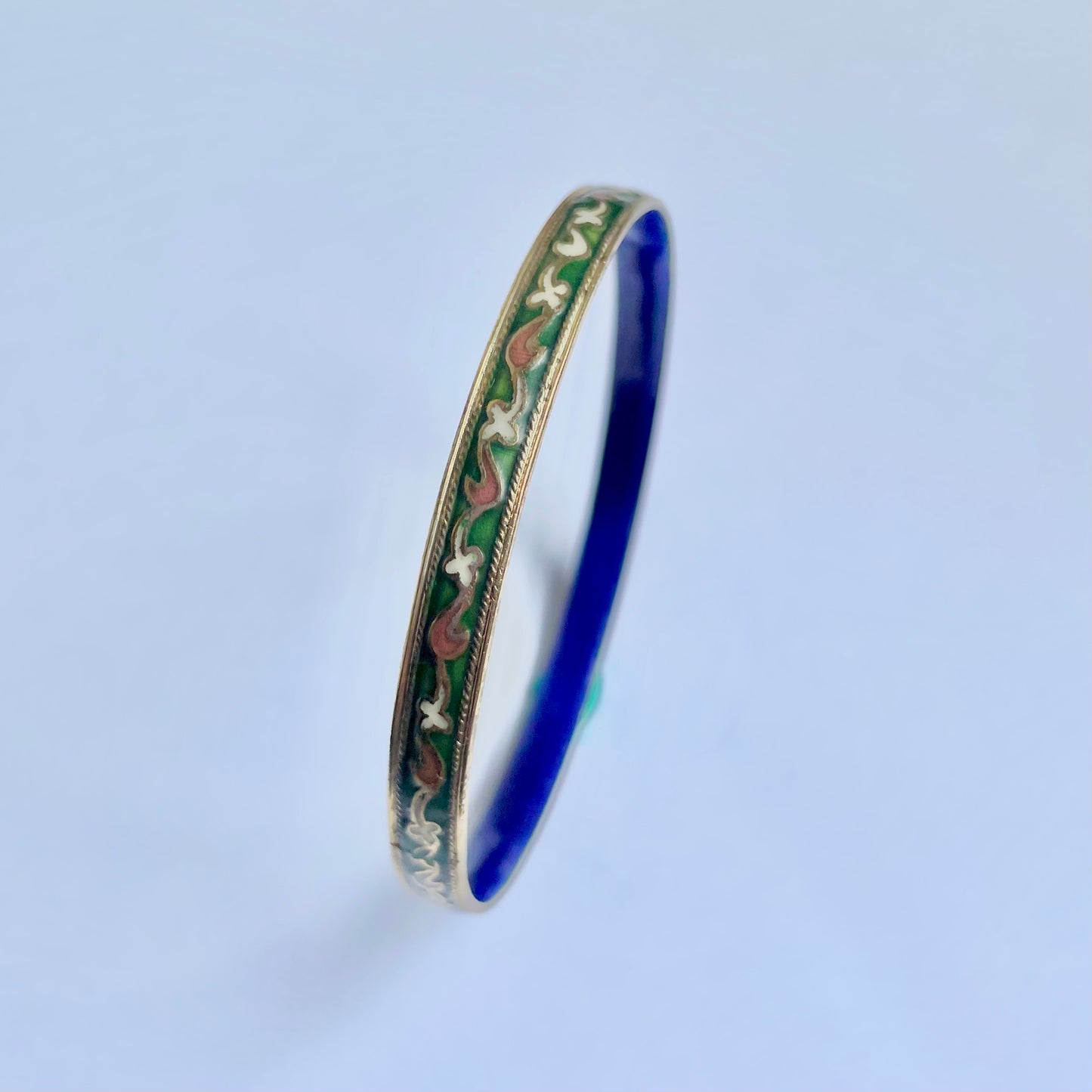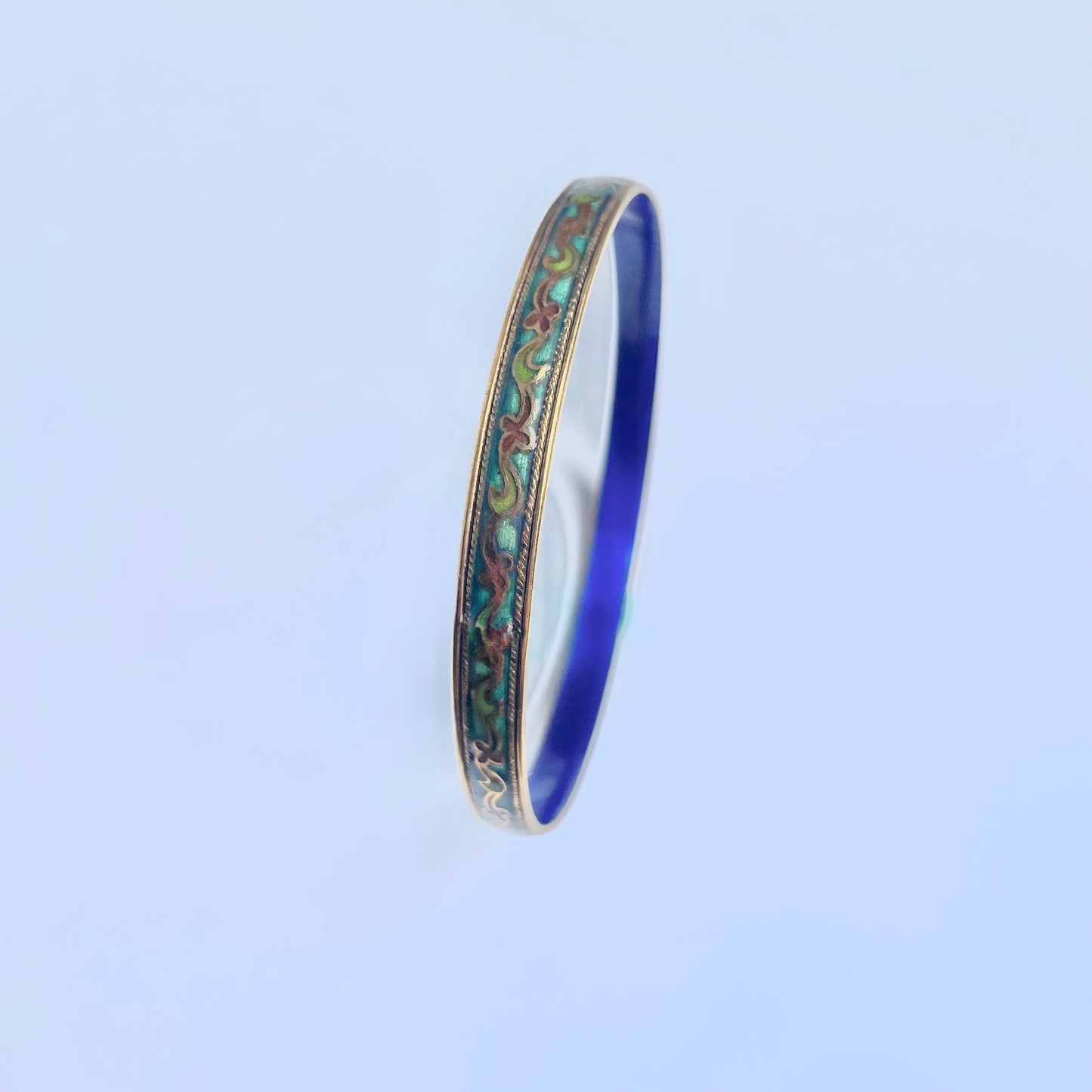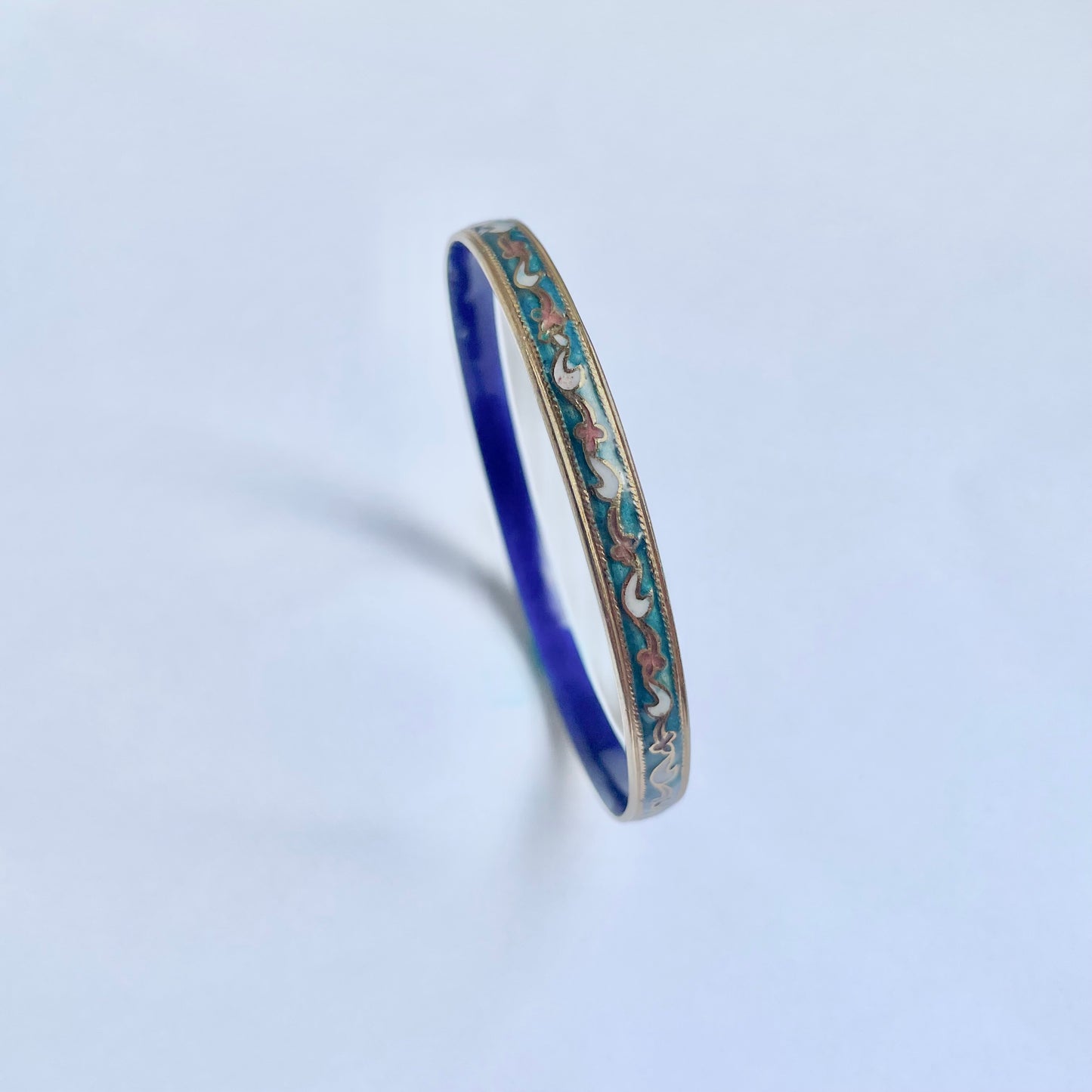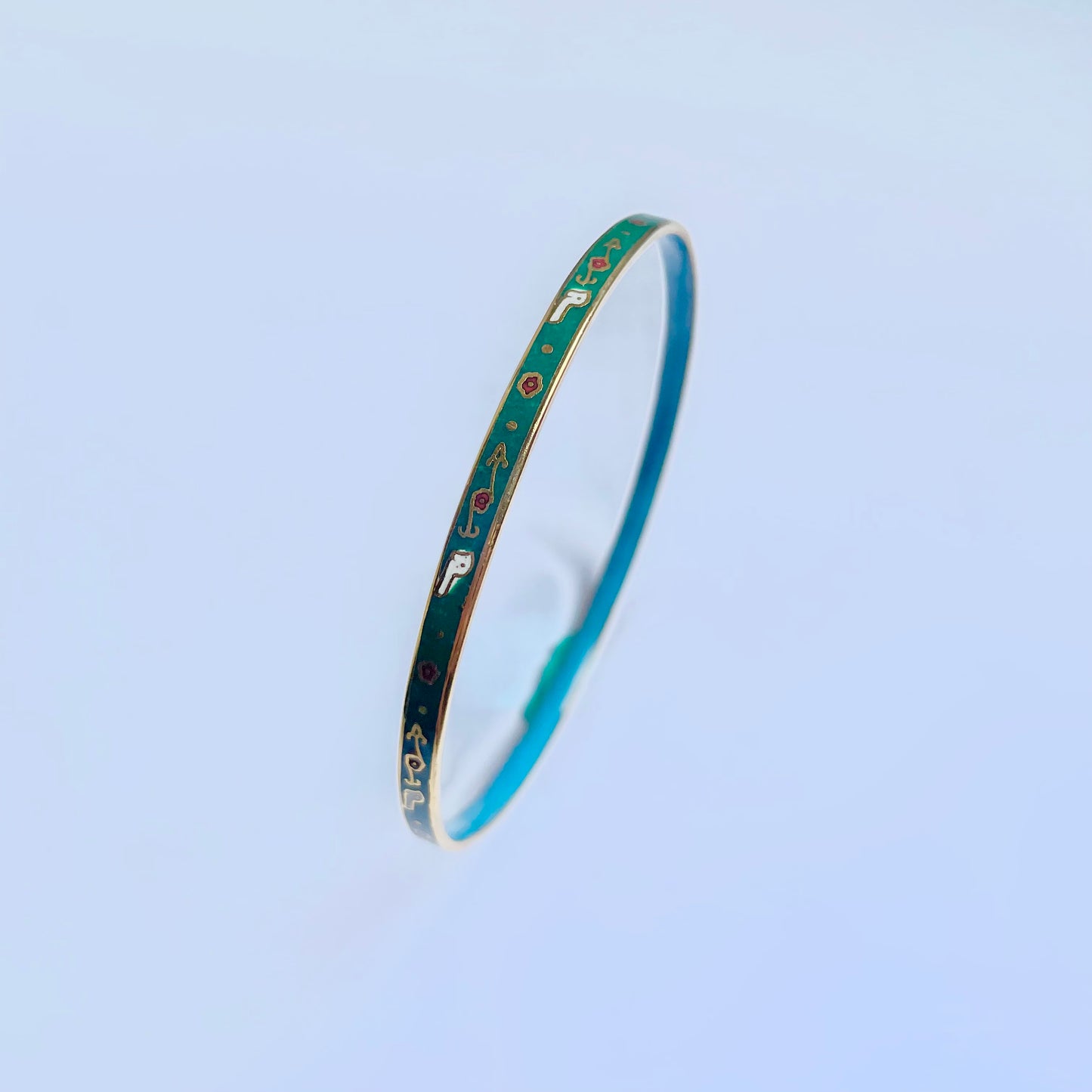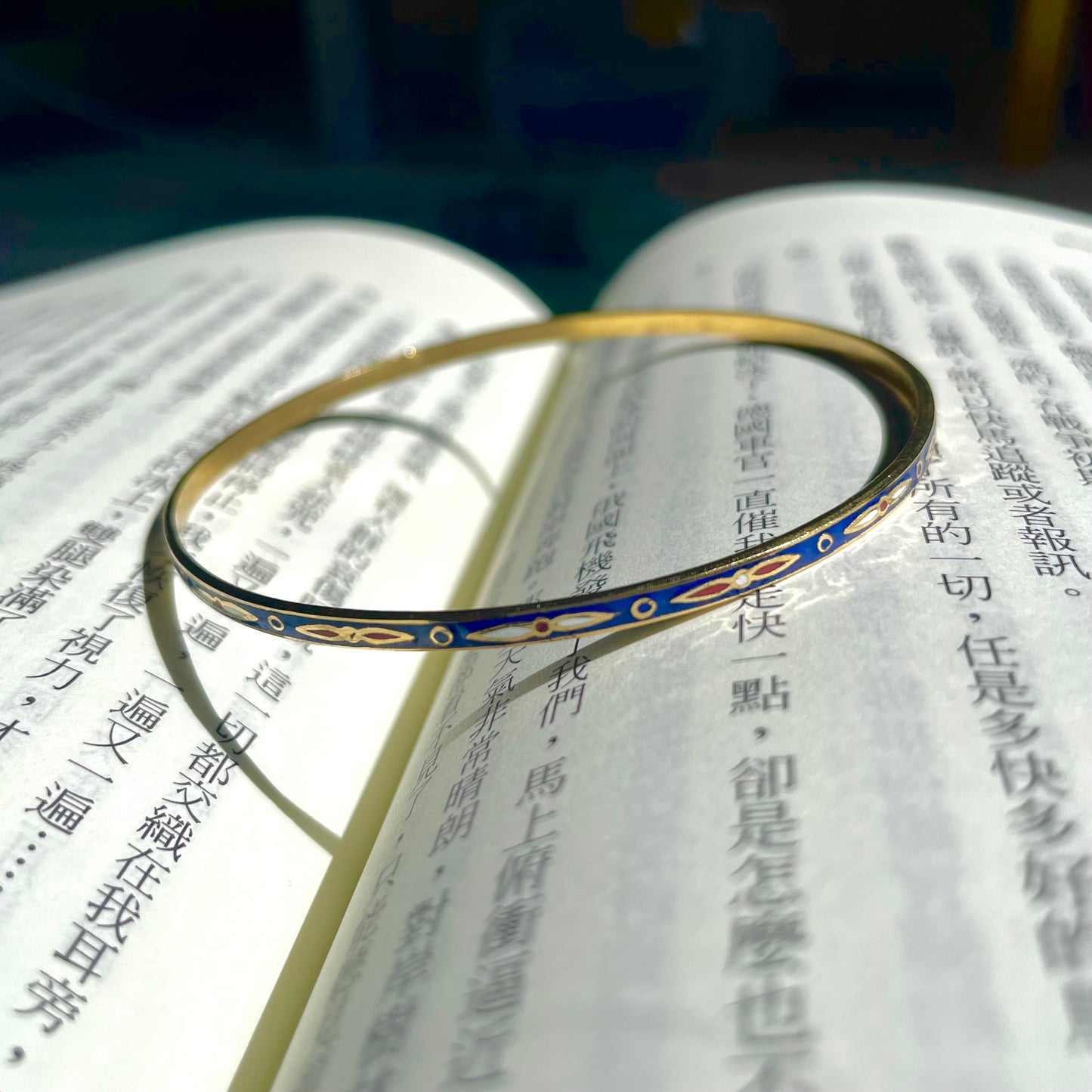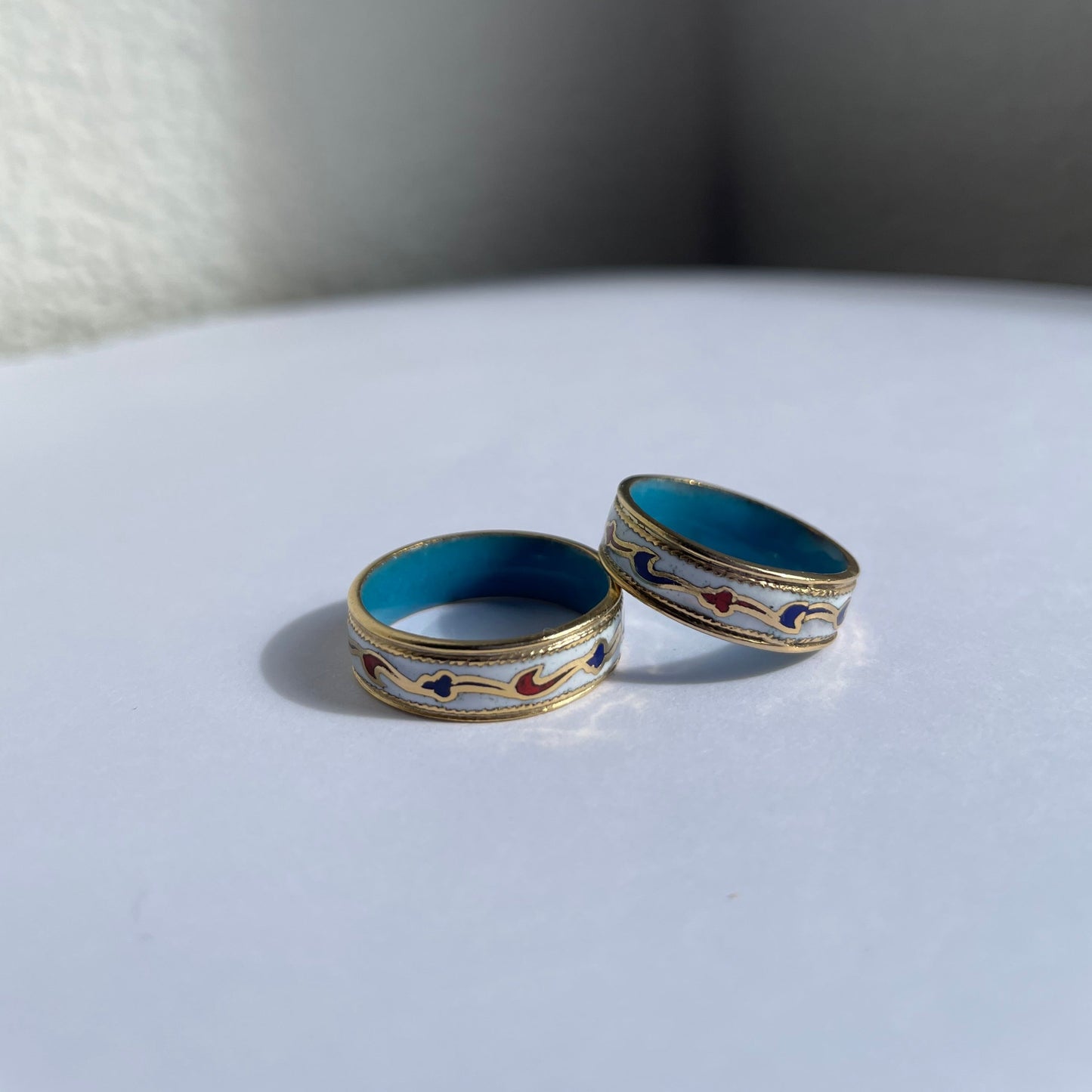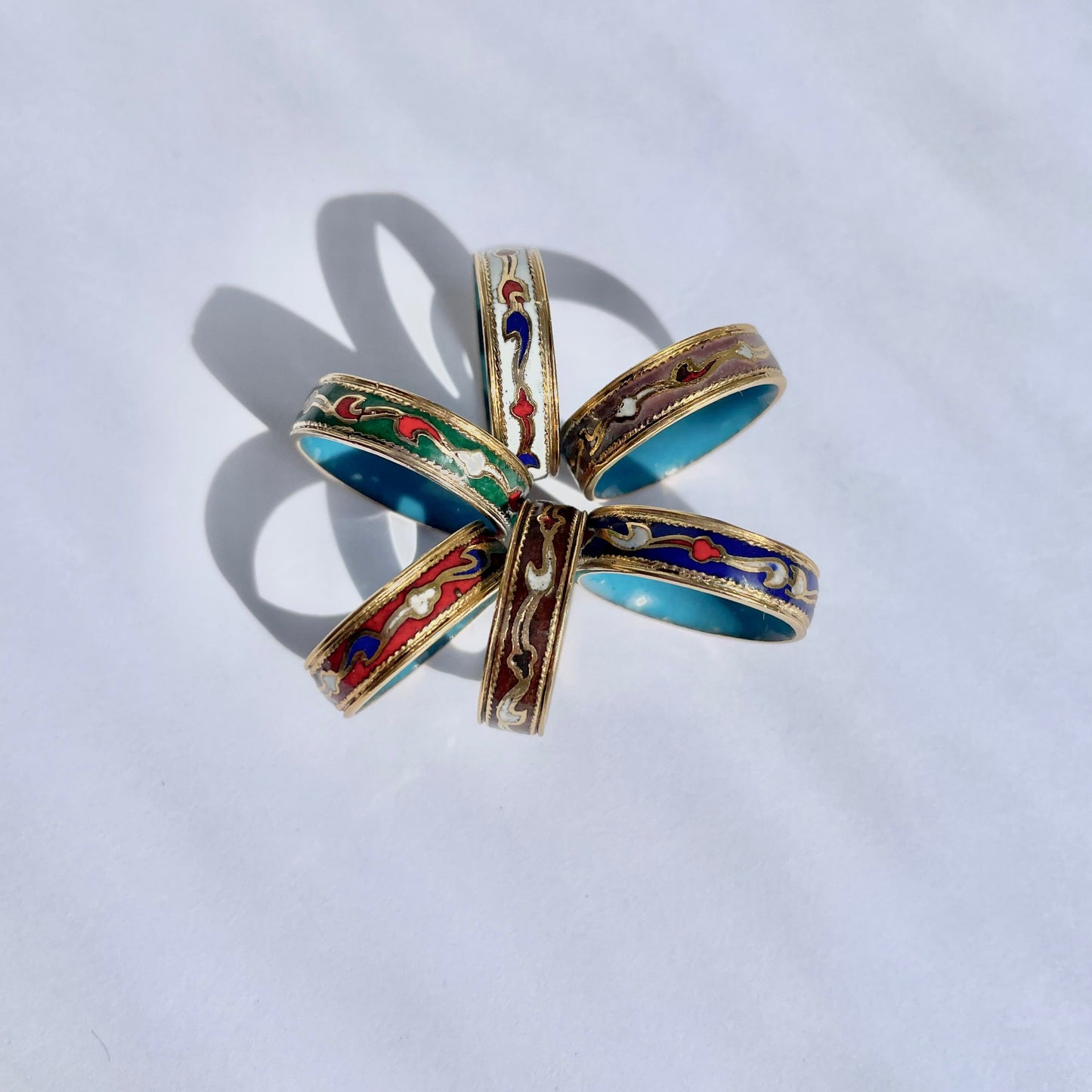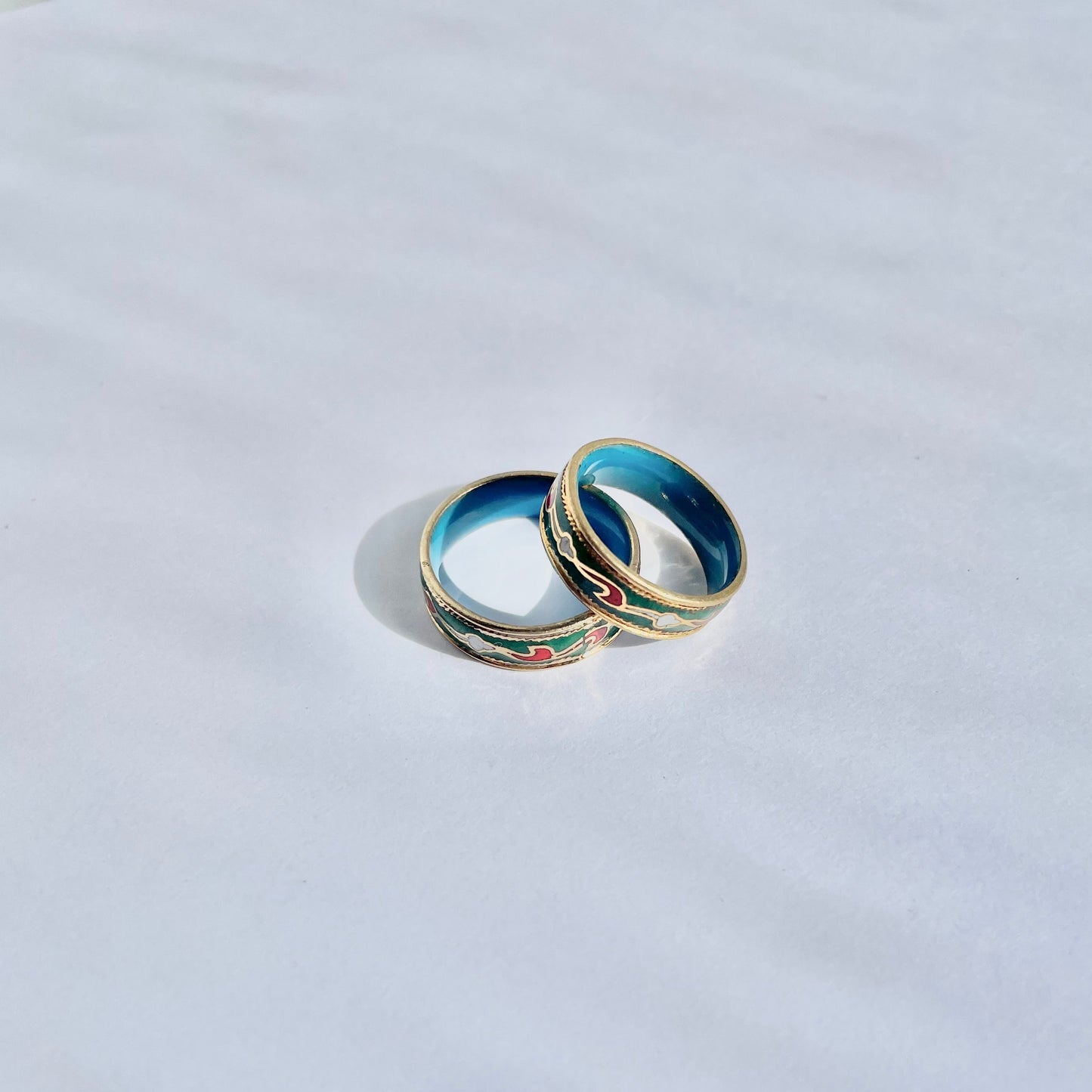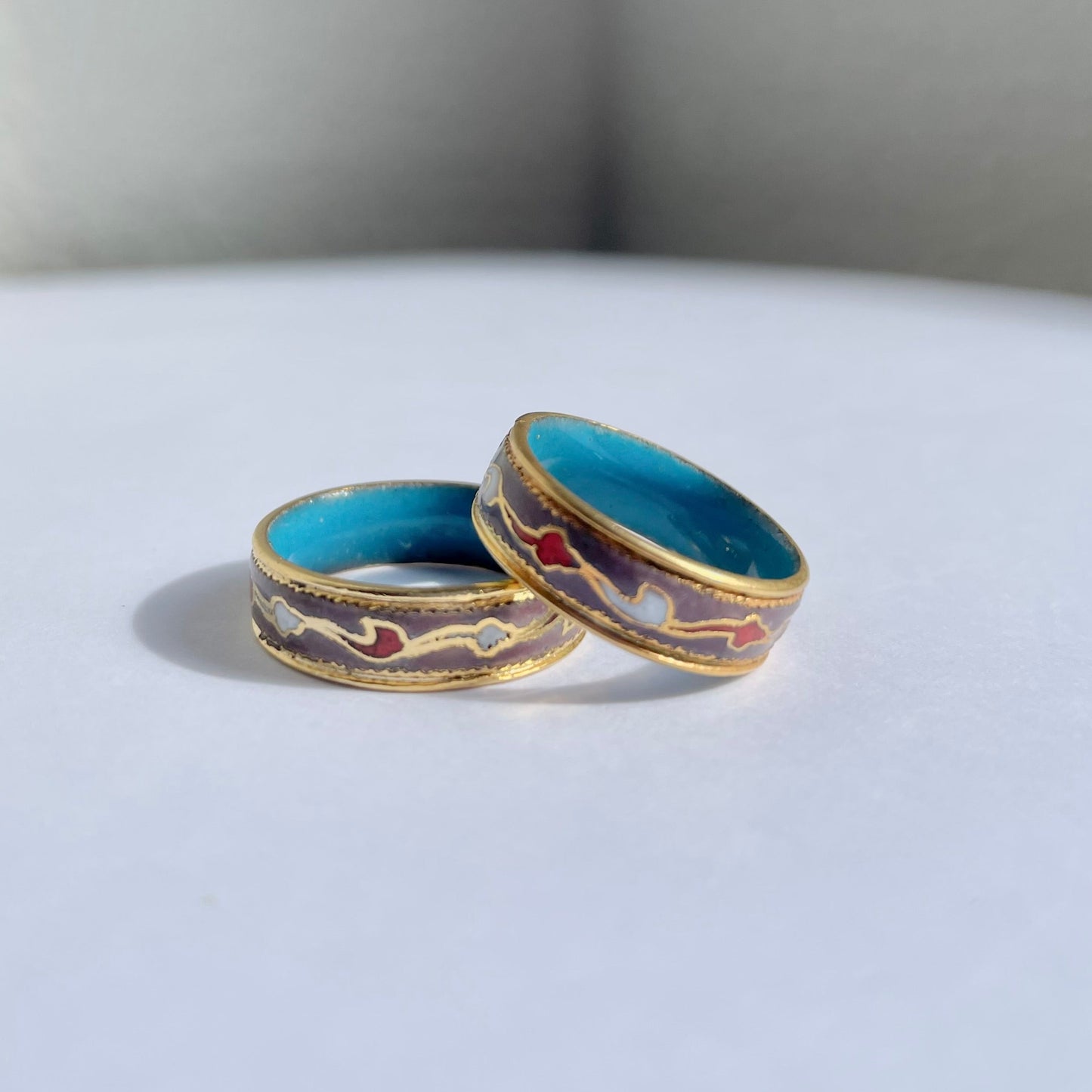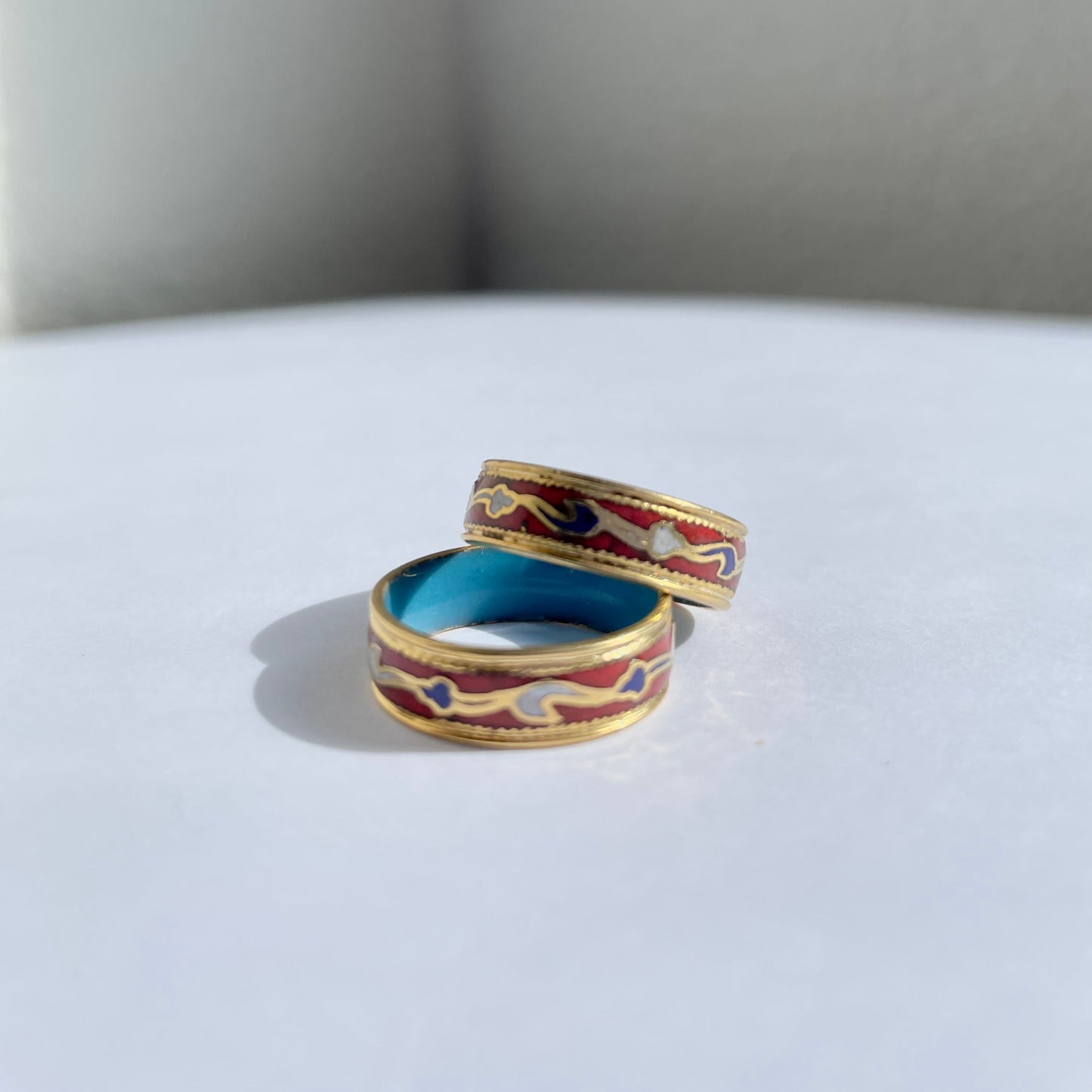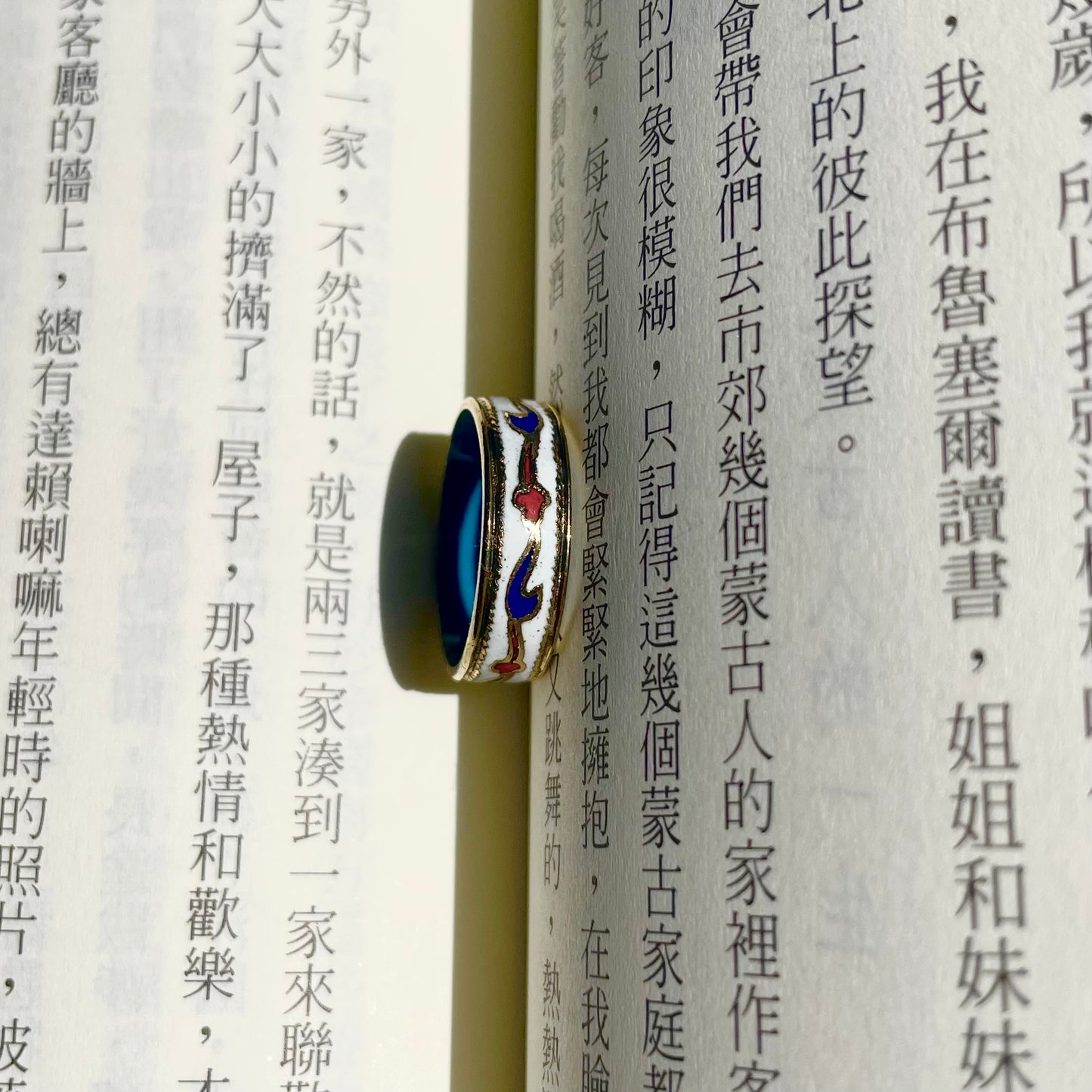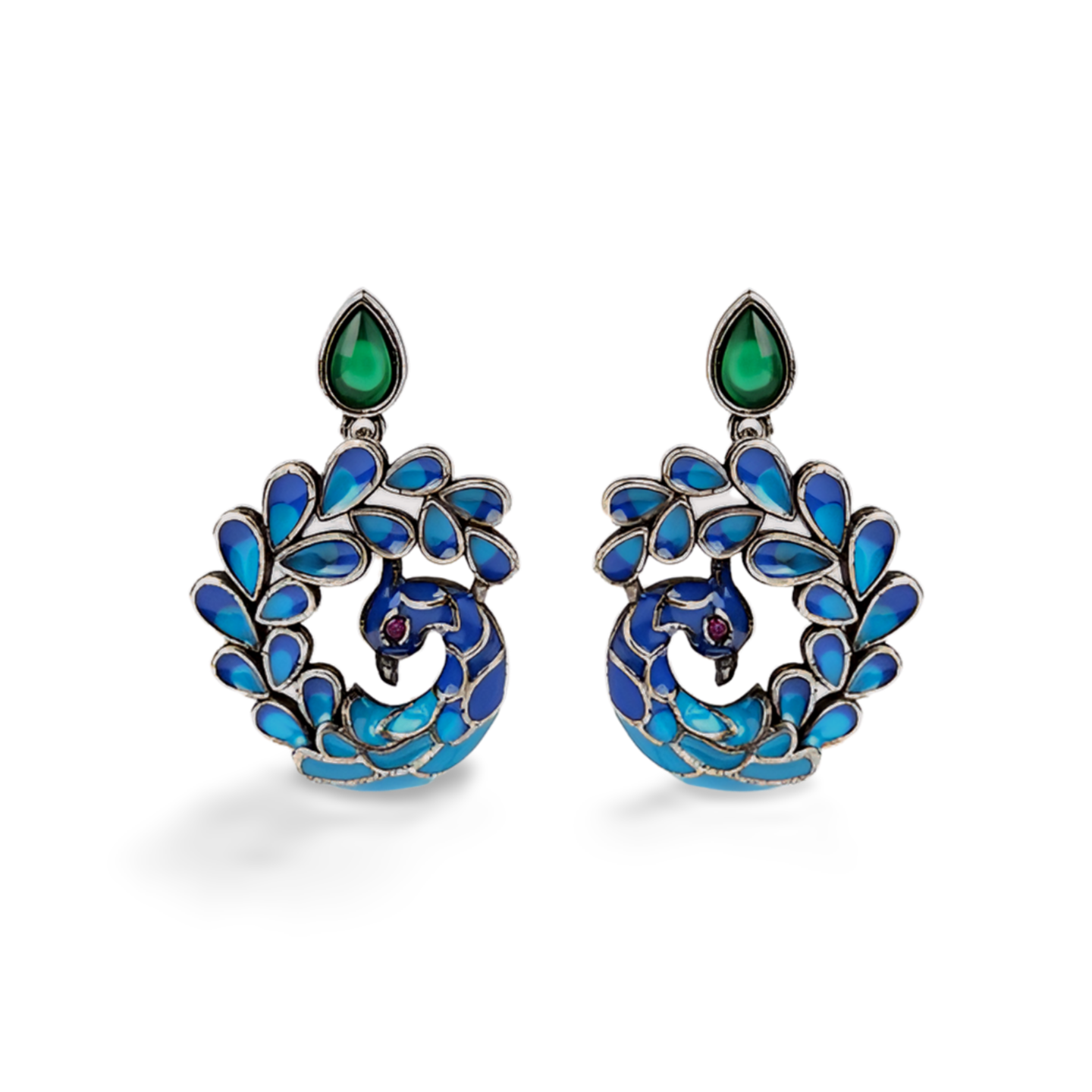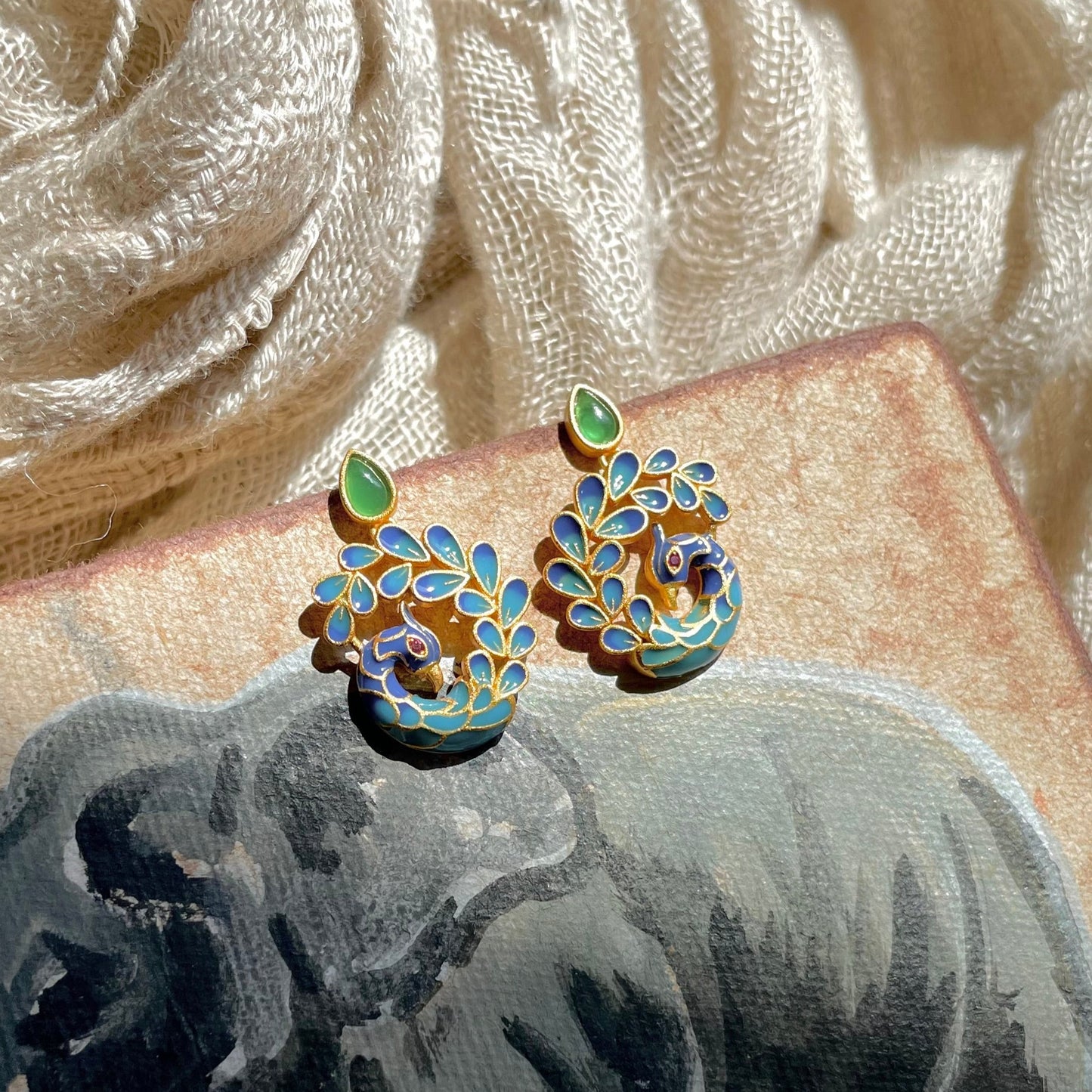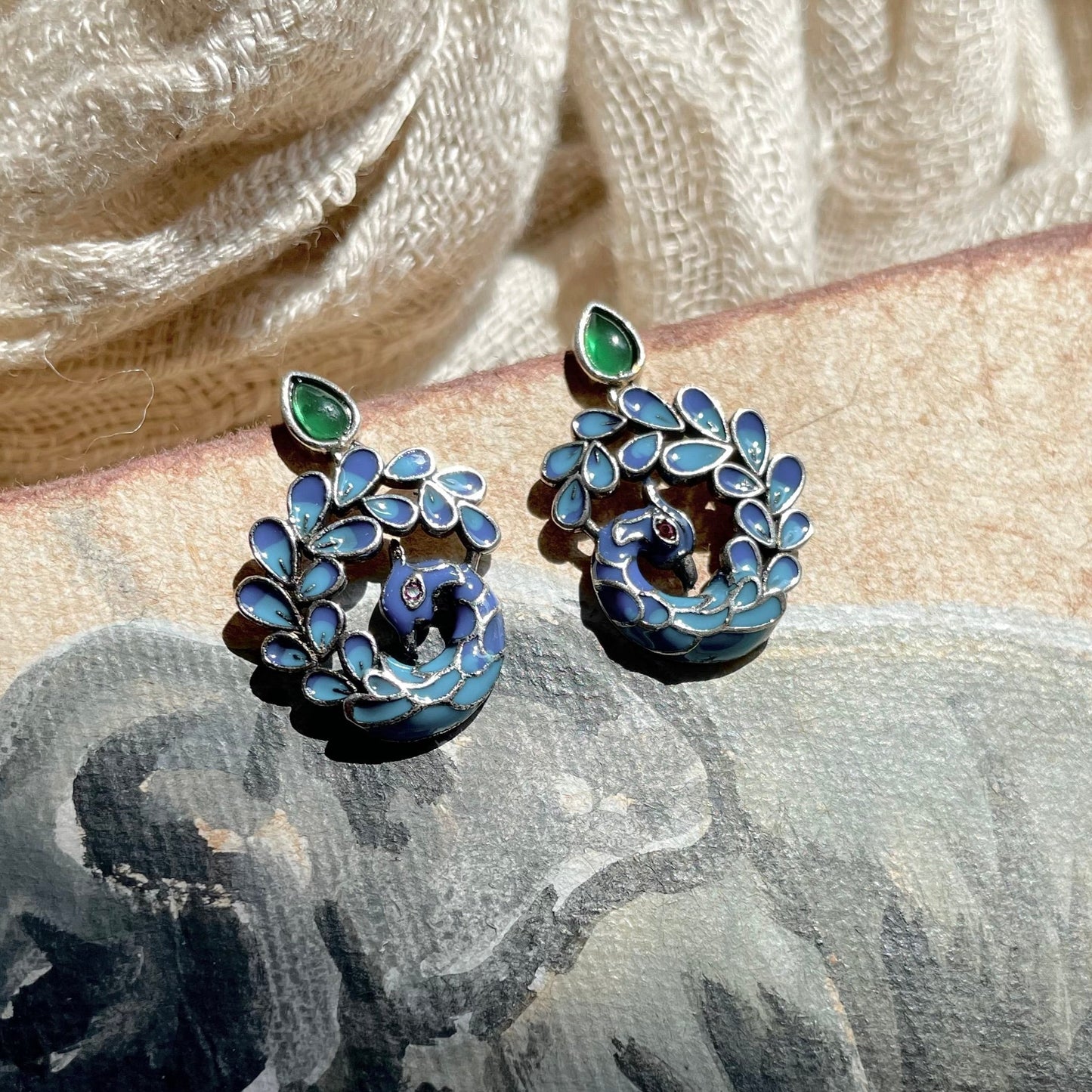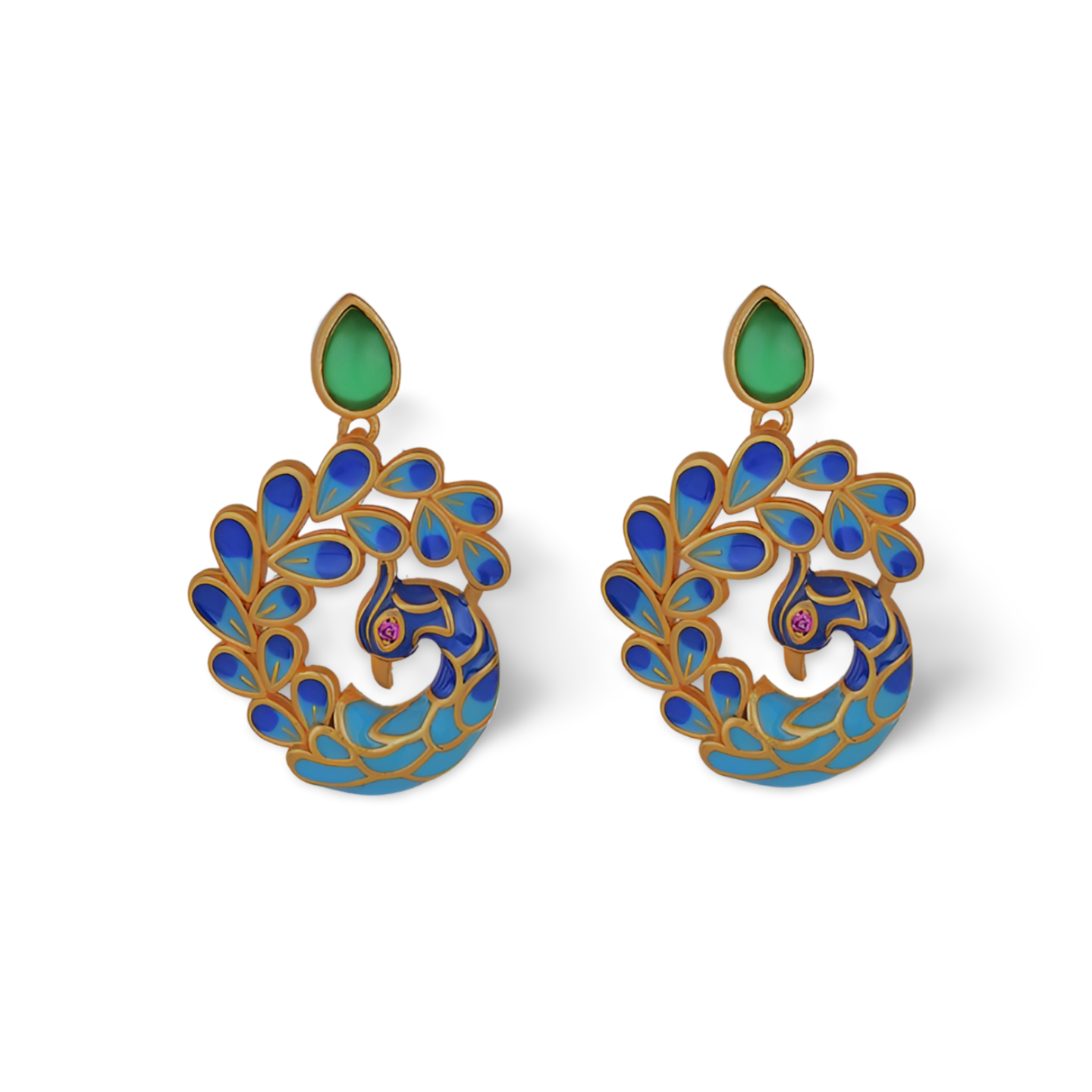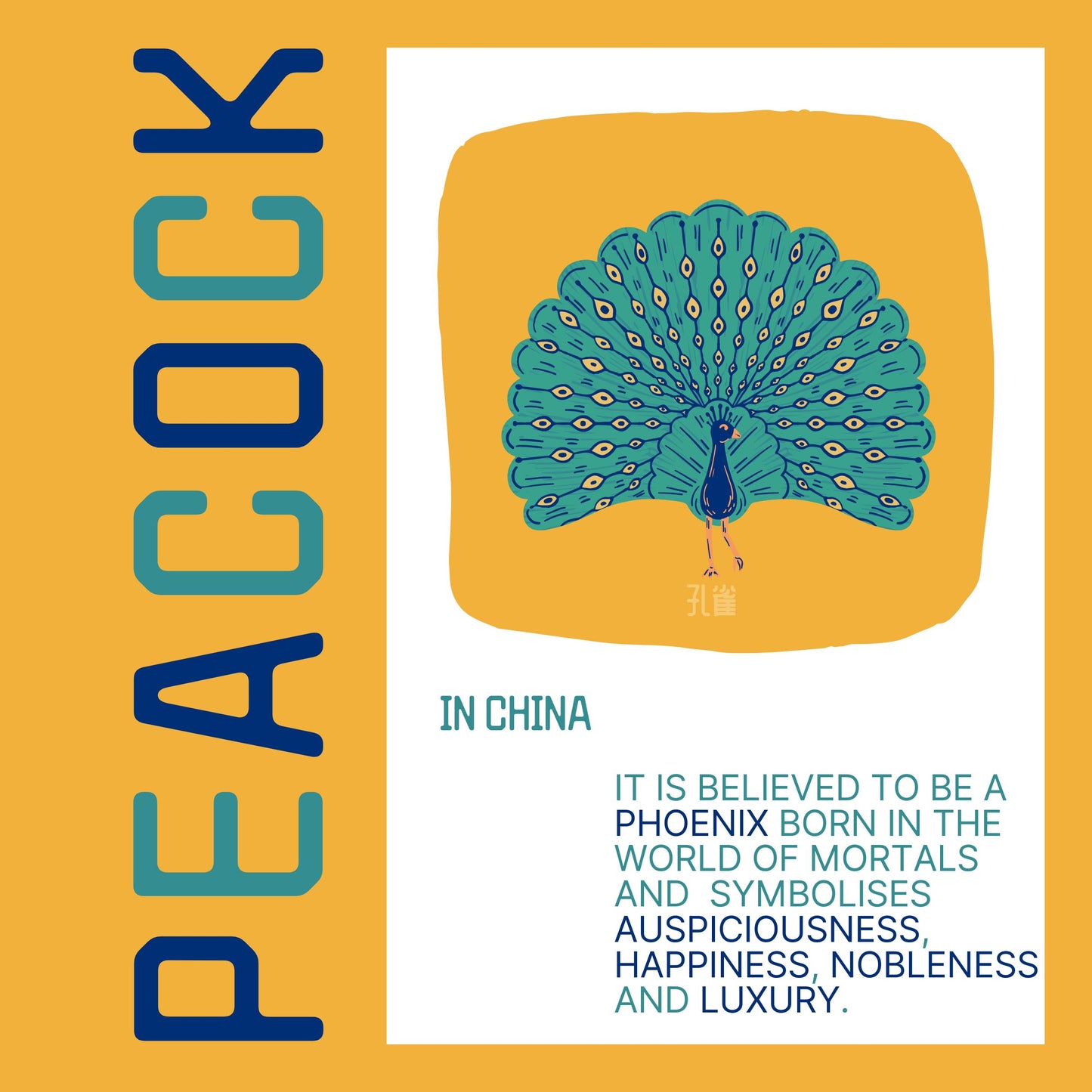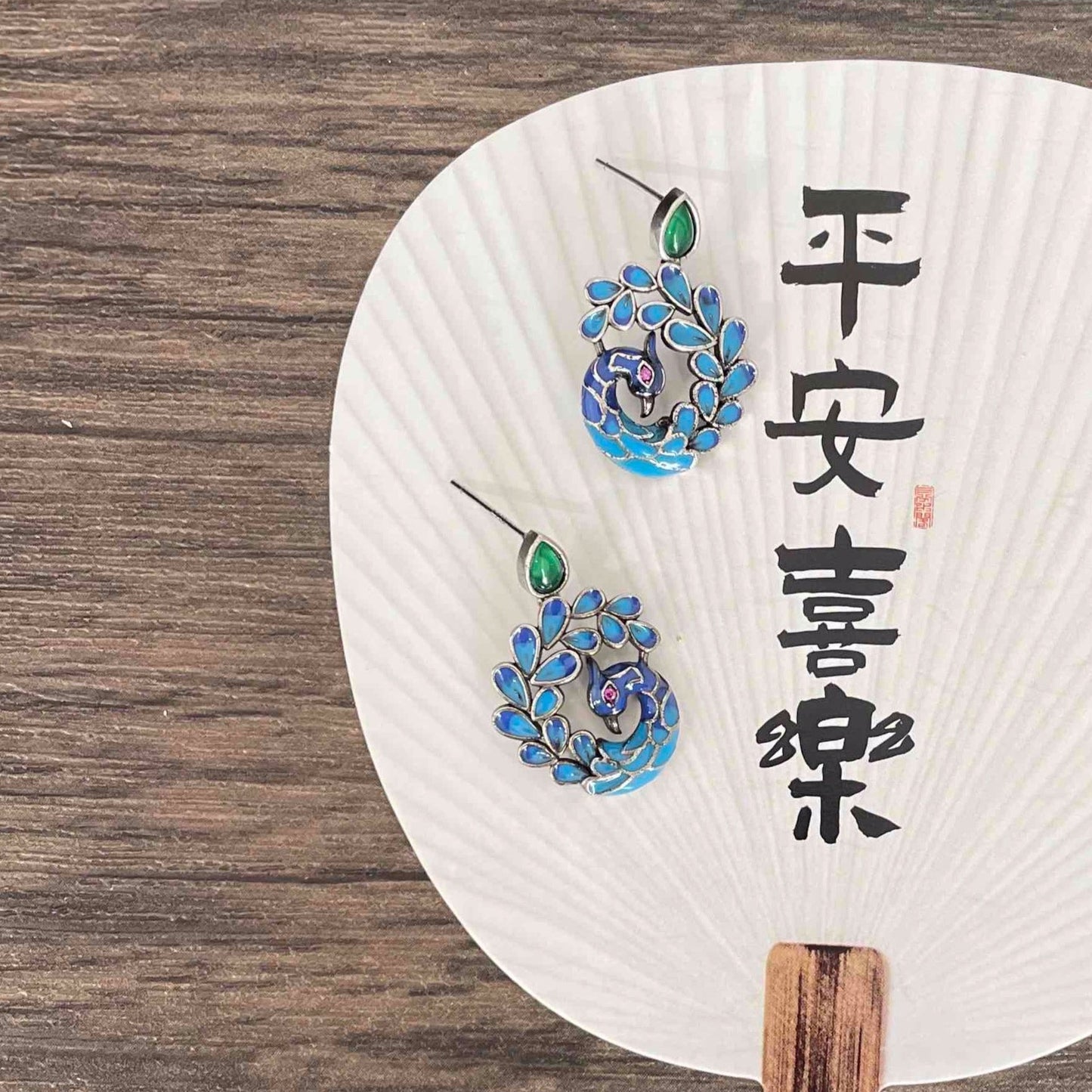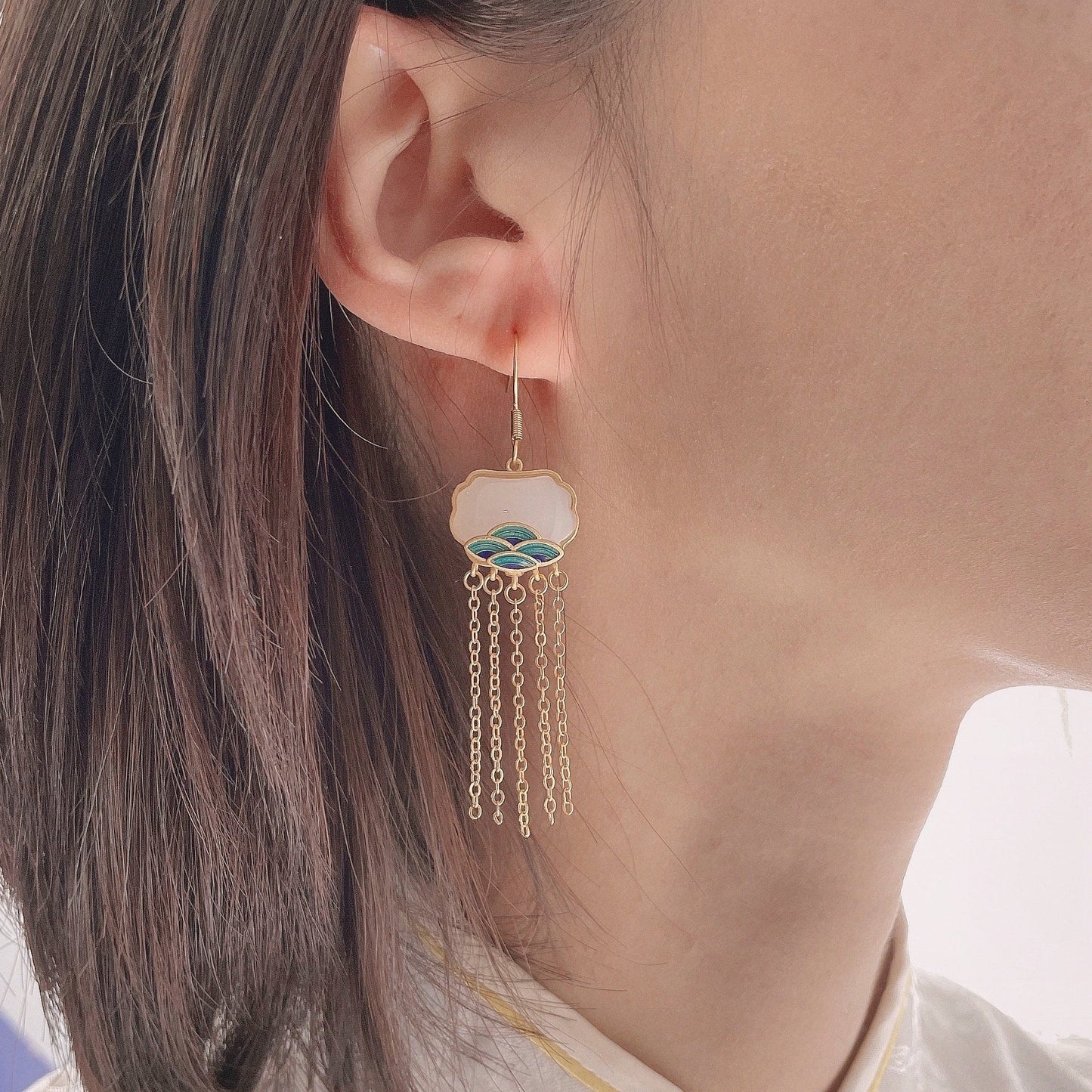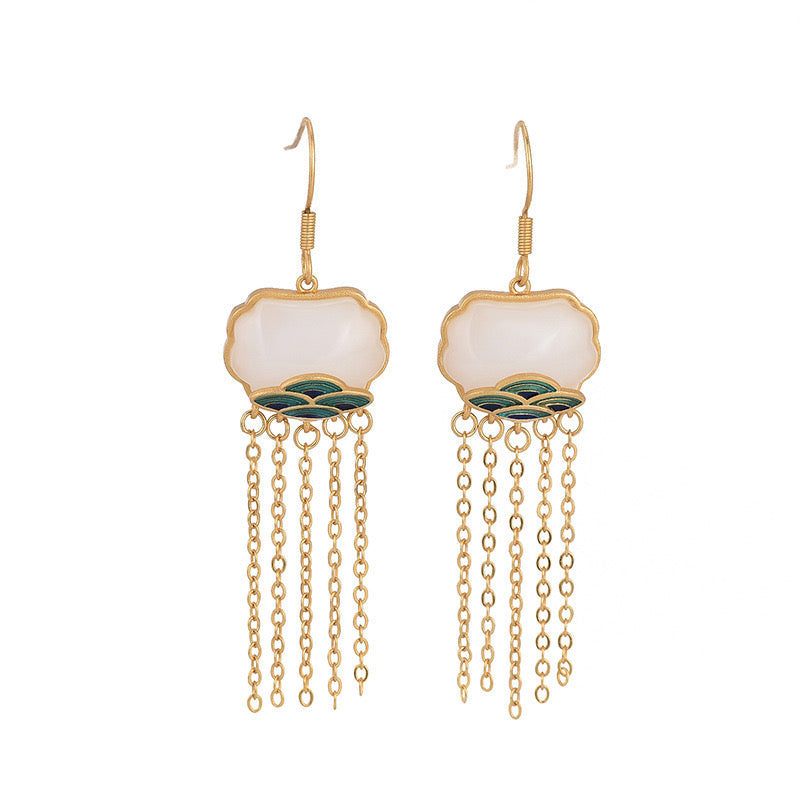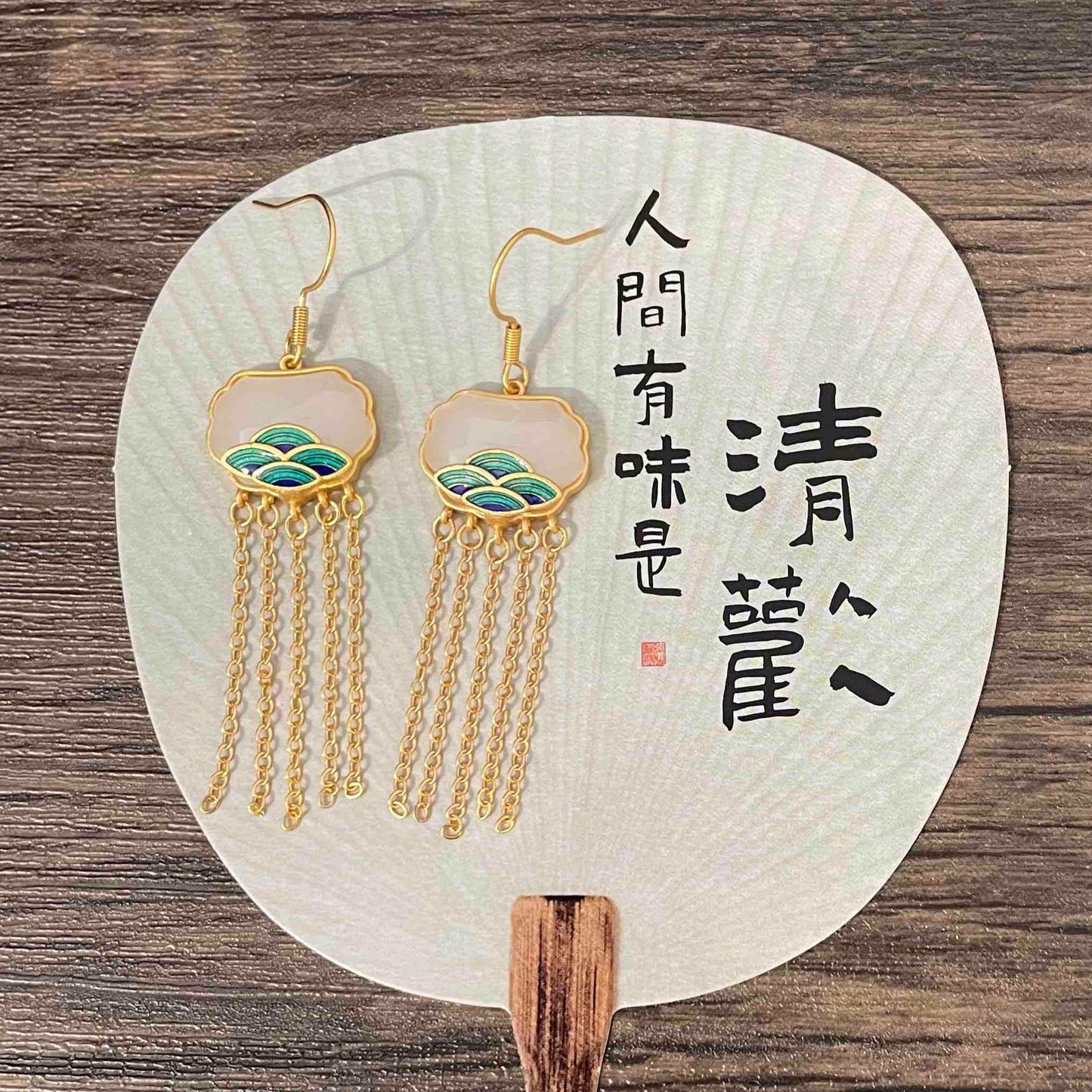What comes to your mind when you think of Chinese art?
Perhaps you imagine delicate calligraphy, intricate ink or Dunhuang frescoes. But have you heard of cloisonné enamel?
Following up on our previous blog post, cloisonné enamel is one of the eight traditional Chinese jewellery-making techniques.
Cloisonné enamel (also known as jingfa Cloisonné), pronounced as jǐng tài lán (景泰蓝) in Chinese, is a stunning craft that has been practiced in China for centuries. It involves fusing coloured enamel to metal to create intricate designs and patterns that seem to shimmer and glow in the light.

In this blog, I will start by explaining what Cloisonné enamel is, talking about its history, and highlighting some of the most well-known pieces. We’ll also explore how it is made and some of the unique techniques used in the process, and comparisons between Cloisonné enamel and other art forms that you may be familiar with. Finally, I will share some tips for appreciating and collecting cloisonné enamel objects.
So come along with me and discover the wonder of cloisonné enamel.
I. Let's begin with a story
Long long ago, in the Tang Dynasty (618-907), there was a man named Cui Hao, who was a famous blacksmith in China. One day, while he was working on a piece of metal, he accidentally dropped a piece of colored glass into the molten metal. To his surprise, the glass fused with the metal and created a beautifully coloured design.
Inspired by this accidental discovery, Cui Hao began experimenting with different colours and designs. He created a new technique of fusing coloured enamel to metal, and called it "cloisonné," which means "partitioned" in French. The technique involved creating compartments, or partitions, on a metal surface with thin wires, and then filling these compartments with colored enamel.
The cloisonné technique quickly became popular in China and was used to create a wide range of objects, from vases and bowls to jewellery and figurines. It was particularly popular during the Ming (1368-1644) and Qing (1644-1911) Dynasties, when it was used to create exquisite works of art for the imperial court.
But cloisonné enamel was not only a product of China's domestic culture; it was also influenced by trade with other countries. During the Ming Dynasty, for example, the Chinese developed a taste for blue and white ceramics from the Middle East, and began incorporating this style into their own designs. Similarly, when the Jesuit missionary Matteo Ricci introduced Western enameling techniques to China in the 16th century, Chinese artisans incorporated these innovations into their own work.
Today, the cloisonné technique is still used to create beautiful and intricate pieces of art, and is considered a treasured part of China's cultural heritage around the world. Its intricate designs, vivid colors, and rich cultural history continue to captivate and inspire people of all ages and backgrounds.
II. Popular items favoured by collectors globally
The creation of a cloisonné enamel artwork involves attaching soft flat copper wire patterns, known as filigree, onto a copper-based embryo, filling the spaces with vitreous enamel glaze, and firing it at a low temperature to produce a smooth and vibrant surface. Master artisans can spend years honing their techniques and perfecting their designs to achieve the desired effect, making cloisonné enamel a highly valued and sought-after art form among collectors.
Alfred Morrison
One notable collector of cloisonné enamel pieces was Morrison, the "richest man in Britain" in the 19th century, who amassed an impressive collection of Chinese art, including porcelain, enamelware, and sculptures, among others. One of the most famous items in his collection was the "Fangshanju", a private residence filled with art pieces, which was eventually sold off by his descendants after three generations.
In November 2010, at the Christie's autumn auction in Hong Kong, a pair of QingYongzheng imperial custom-made filigree enamel double crane incense burners became the highest-priced lot at the time of the sale. This pair of incense burners were a present from Emperor Qianlong (when he was the prince) to congratulate his father, Emperor Yongzheng, on his birthday. The appearance of a large and a small crane cuddling together was to demonstrate the harmonious father-son relationship while giving birthday wishes.
How much did Morrison love this pair of incense burners and the technique? There is evidence of his love, as he once commissioned a painter to paint a portrait of himself, with this pair of double crane incense burners in the background of the painting.
Cloisonné enamels at auctions

At the 2021 Christie's Hong Kong Spring Auction, the "Chinese Porcelain and Fine Crafts" session saw the Qing Qianlong enamel-painted hanging scroll with poem and Western chrysanthemums (figure x) sold for RMB 7,659,000 (approximately equivalent to USD 1.2 million); at the same session, the Qing Qianlong enamel-painted longevity vase with the hidden Eight Immortals and the dragon with five claws on the neck (Figure y) sold for RMB 6,367,320 /USD 1 million.
In the same year, at the China Guardian 2021 Spring Auction, the Qing Qianlong copper enamel large incense burner (Figure z) sold for RMB 7,532,500/USD 1.1 million.
Cloisonné enamels at Museums
There are some other famous pieces housed at museums around the world.

The Ming Dynasty Xuande Incense Burner which is a magnificent piece, was created during the reign of the Xuande Emperor (1425-1435), is considered one of the finest examples of Ming Dynasty cloisonné enamel. It is housed at the Palace Museum in Beijing, China.
The Imperial Cloisonné Enamel Plaque was created during the Qing Dynasty (1644-1912), features a delicate floral design in vibrant shades of red, blue, and green. It is now housed at the Metropolitan Museum of Art in New York City.
👉🏼👉🏼Chinese Cloisonné Enamel - An ancient time traveller finding her place in the modern world II 👈👈
By: Angel Ma















